Some artists paint bodies. Rosina Rosinski paints their afterimage.
Working between Berlin and Dortmund, the German artist has shifted from bold figurative painting to textile works that carry presence through absence.
These new textile pieces—never before shown in an exhibition—mark a bold evolution in her practice, and Munchies Art Club is proud to present them for the first time.
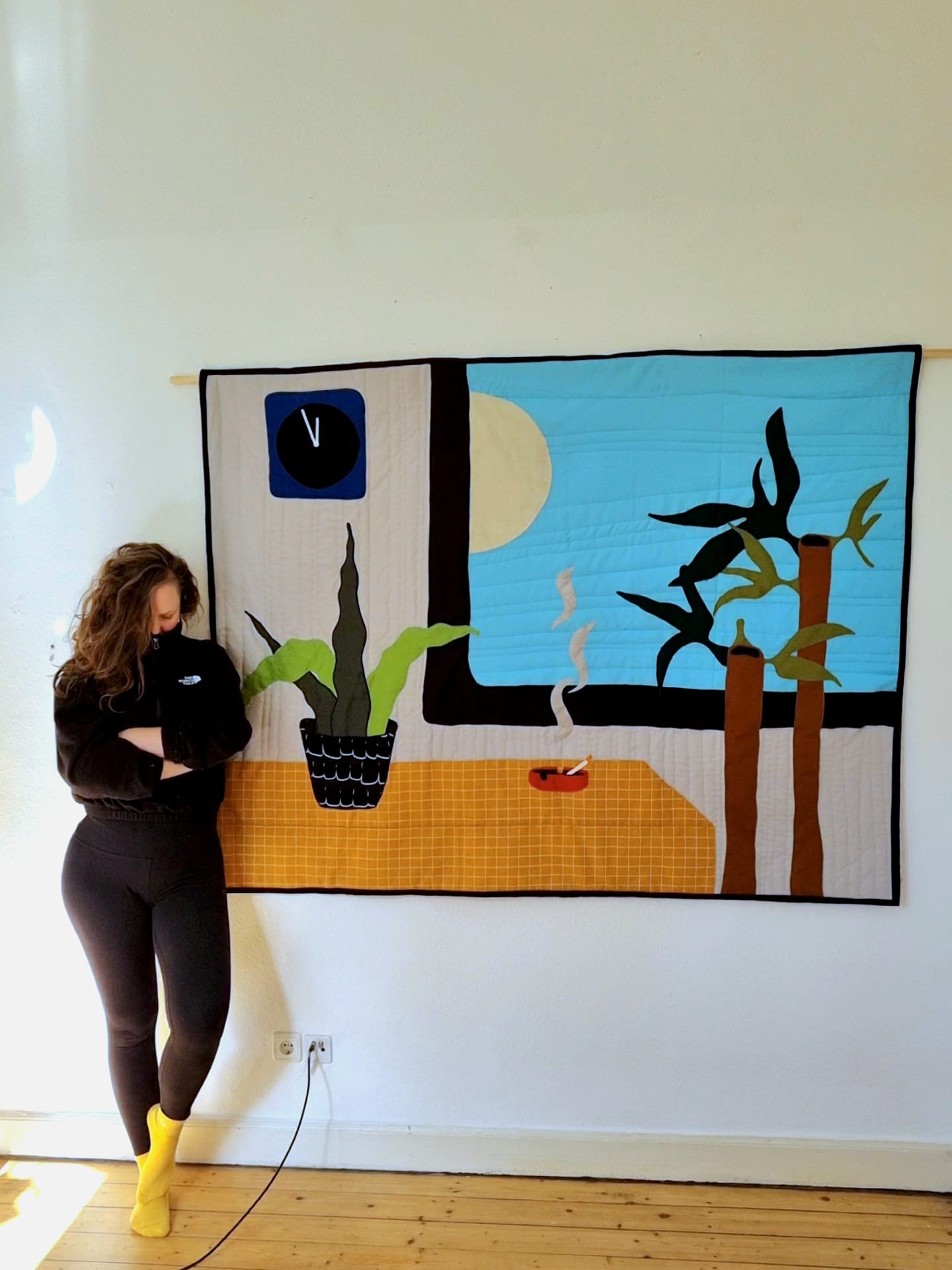
Draped in velvet, stitched in polyester, her practice now builds quiet, powerful interiors—spaces that remember, mourn, and suggest.
It’s post-figurative, but never impersonal. Softness isn’t escape—it’s strategy.
Beyond Canvas: Quilted Scenes and Threaded Selves
Rosinski doesn’t abandon painting. She lets it unravel.
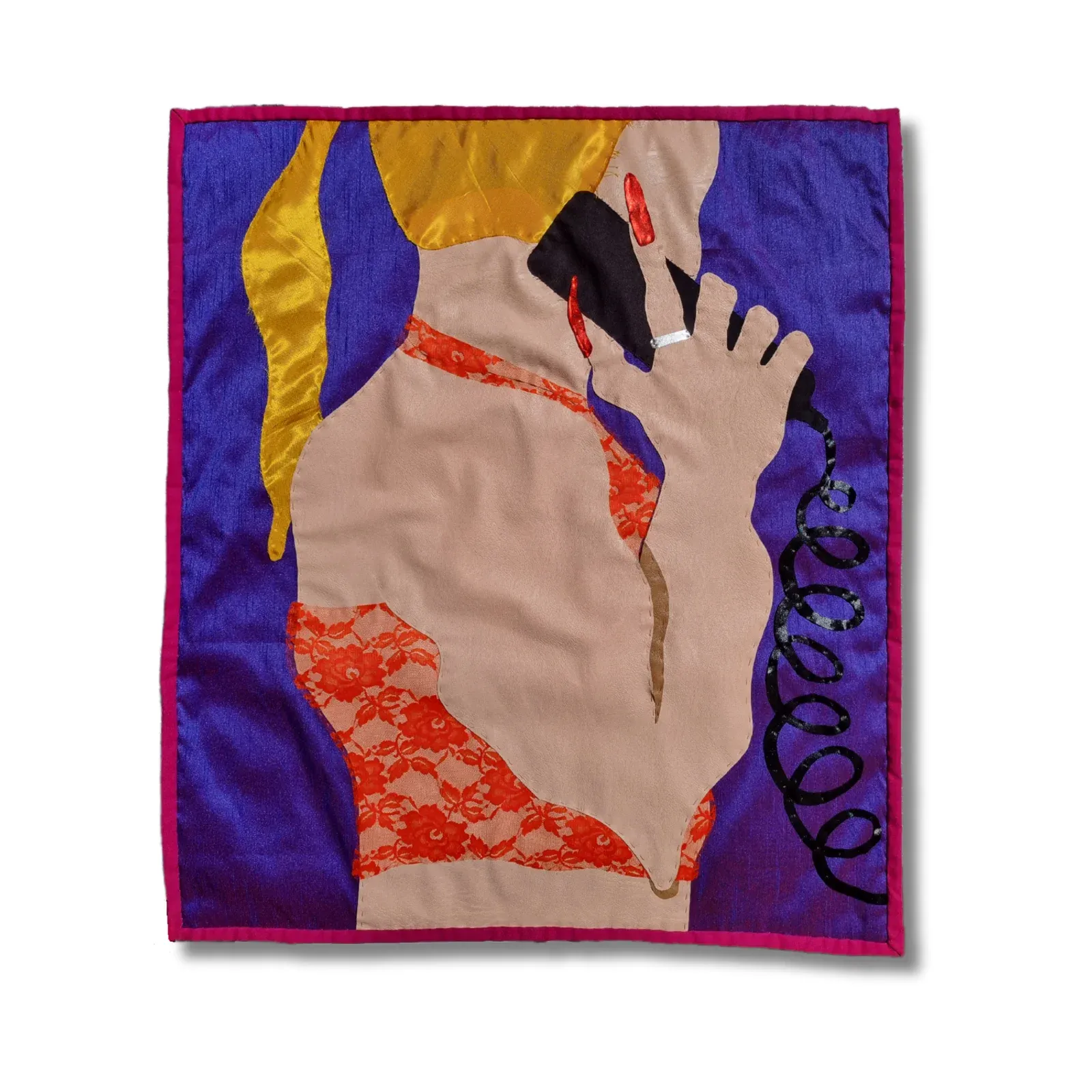

First time we talked, 2025 Faux leather, cotton, polyester, and lace 74 × 64 cm A quilted scene of emotional intimacy—Rosinski captures the vulnerability of first contact through materials that press, cling, and hold memory in layers. + Ophidiophobia, 2024 Velvet, cotton, and sequin 111 × 82 cm - A symbolic confrontation with fear - this shimmering work references the mythic snake and the psychology of avoidance, rendered in seductive textures.
Her latest works—quilted, stitched, draped—aren’t deviations from figuration; they’re what happens when figuration haunts the room but refuses to show up.
The canvas is gone. What remains are seams, velvet folds, and the eerie quiet of empty interiors.
These are not canvases. They’re thresholds. Quilted griefs. Velvet sighs. Soft architectures where the body is no longer seen, but deeply felt.

Born in 1989 in Dortmund and now based between Berlin and her hometown, Rosinski’s earlier work featured bold, oversized female figures in claustrophobic spaces.
Bodies that leaned, loomed, and claimed visual power.
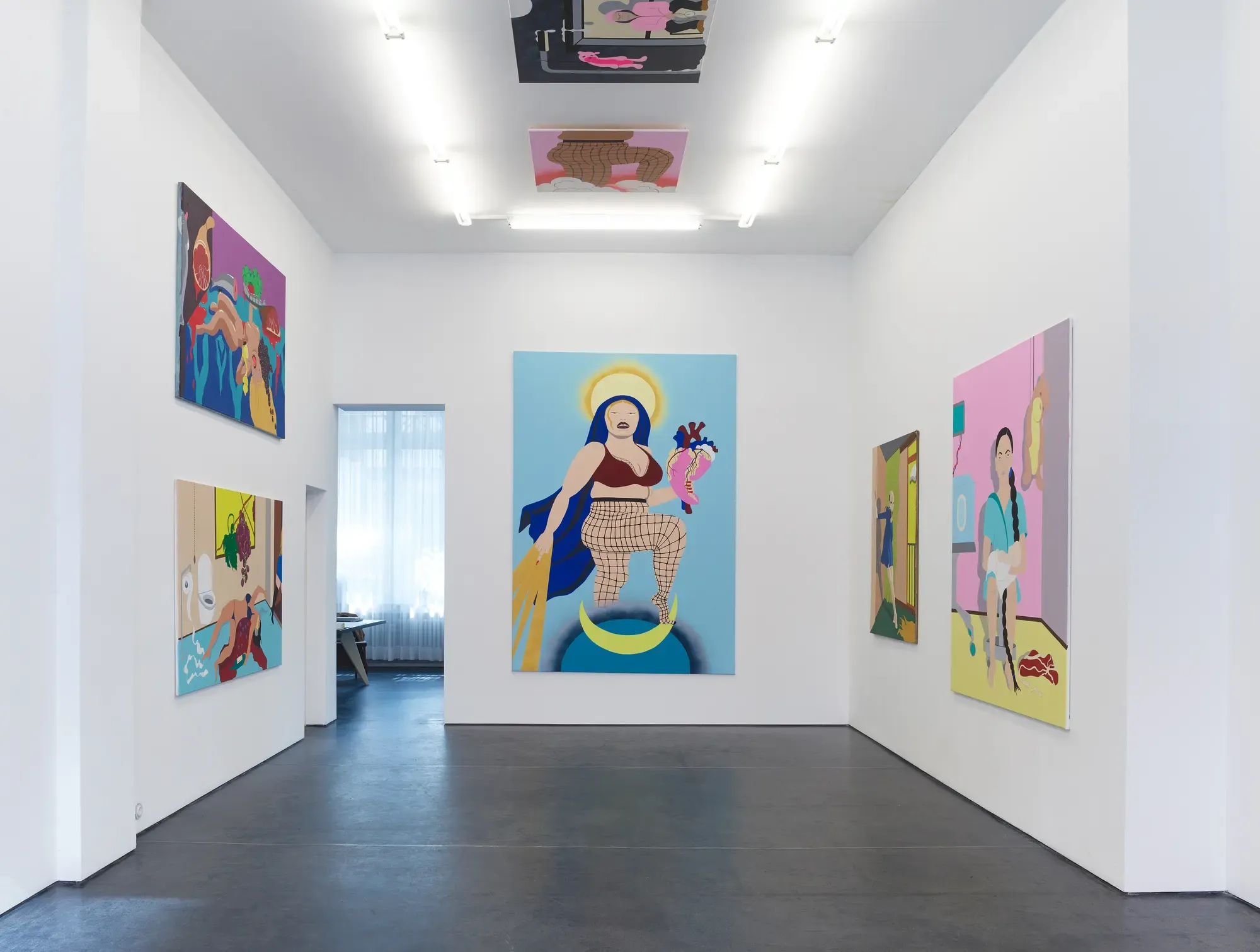

What remains: polyester, lace, velvet, cotton. Not the skin, but its memory. Not the gesture, but the indentation it left behind.
She doesn’t depict. She arranges. A sheet becomes a metaphor. A seam: a scar. These works stage emotional states—shame, care, disappearance—as interior design.
In Gutbürgerlich, a thick domestic still life, bourgeois comfort is turned uncanny. In Rippe bei Nacht II, folds pulse like breath. Her First time we talked isn’t a portrait—it’s a feeling, sewn into faux leather and nervous lace.
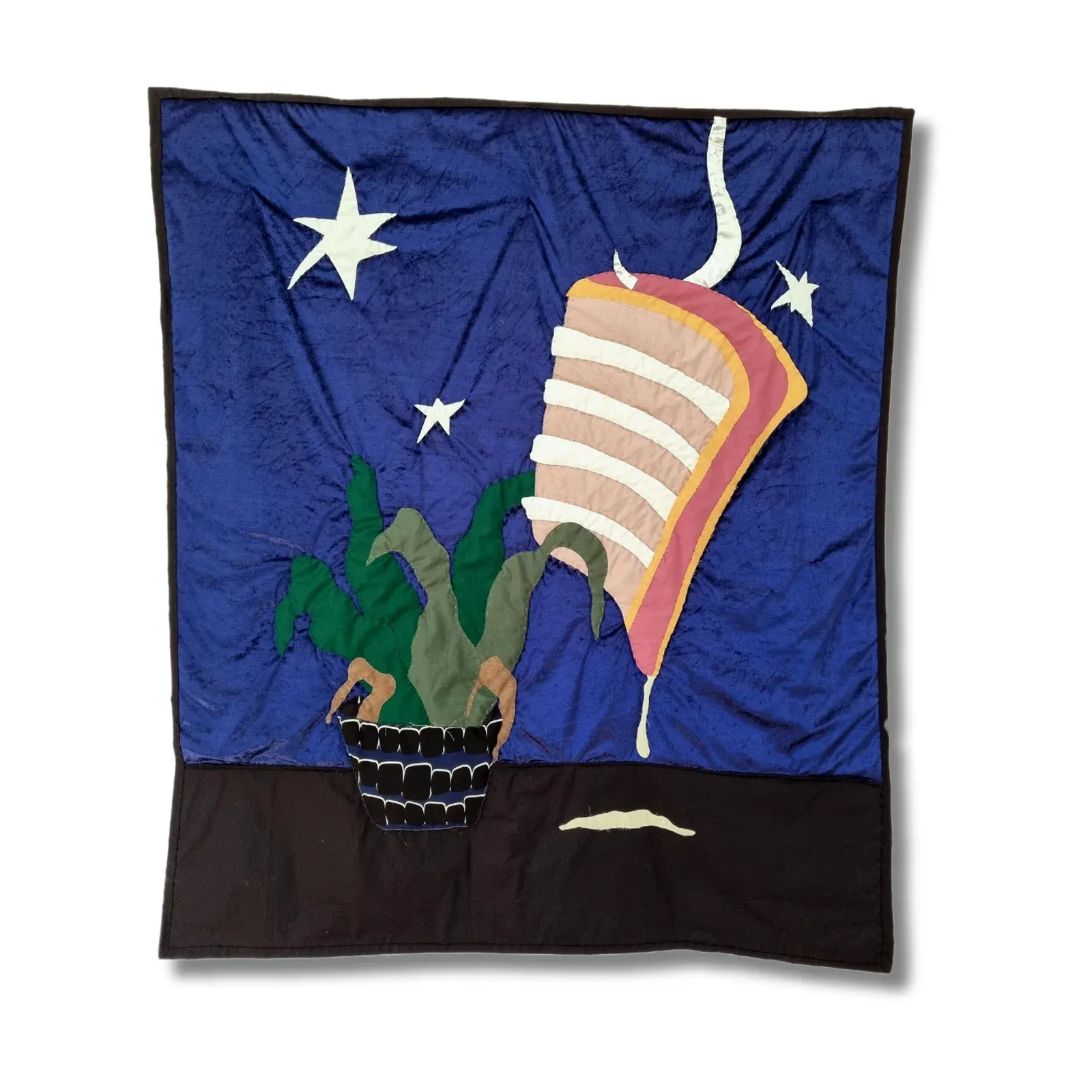
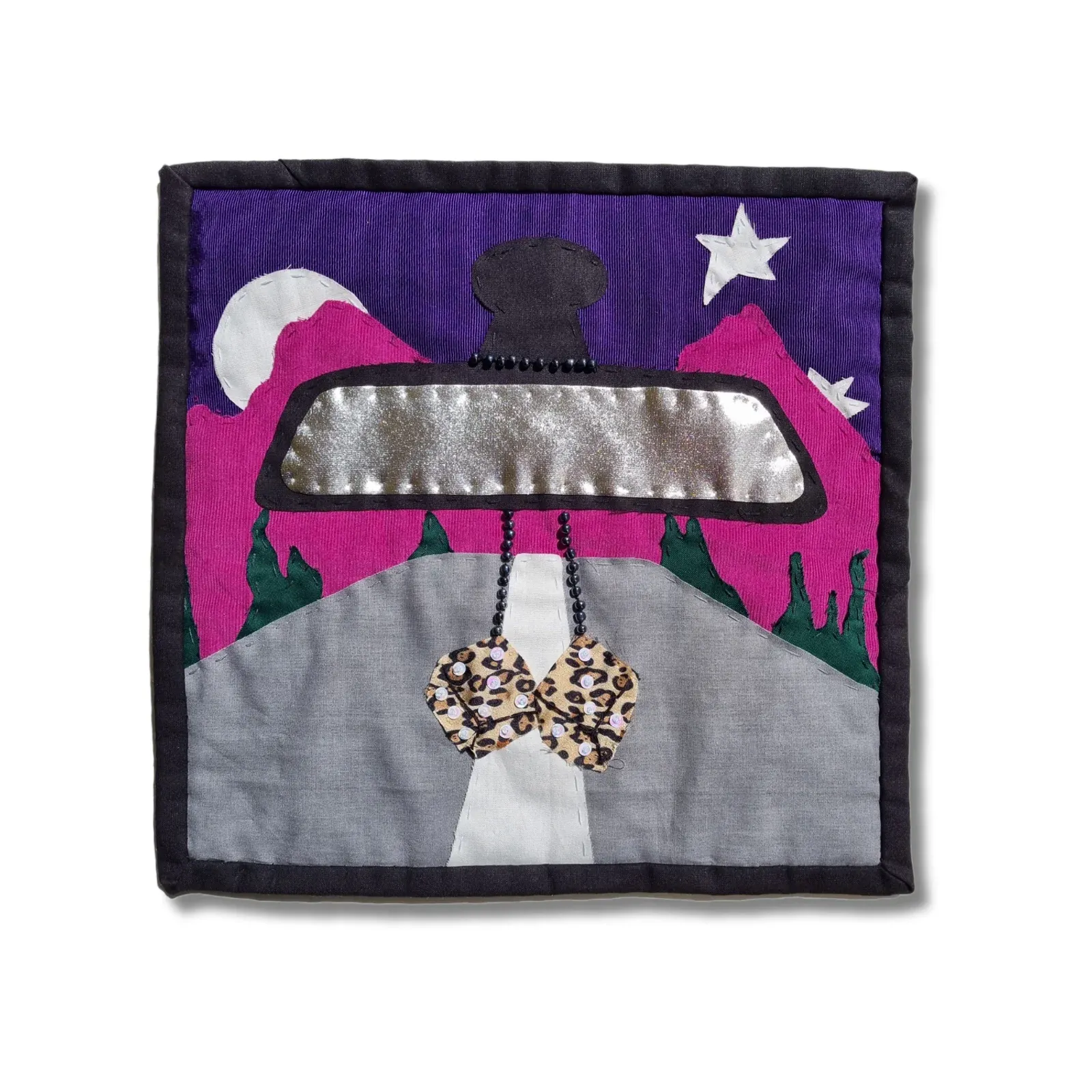
Rippe bei Nacht II (2025), cotton, velvet, and polyester, 145 × 124 cm, and Fuzzy Dice (2025), cotton, polyester, sequin, and beads, 30 × 30 cm. In this pairing, Rosina Rosinski juxtaposes nocturnal stillness with playful symbolism. All works courtesy of and with permission by the artist Rosina Rosinski.
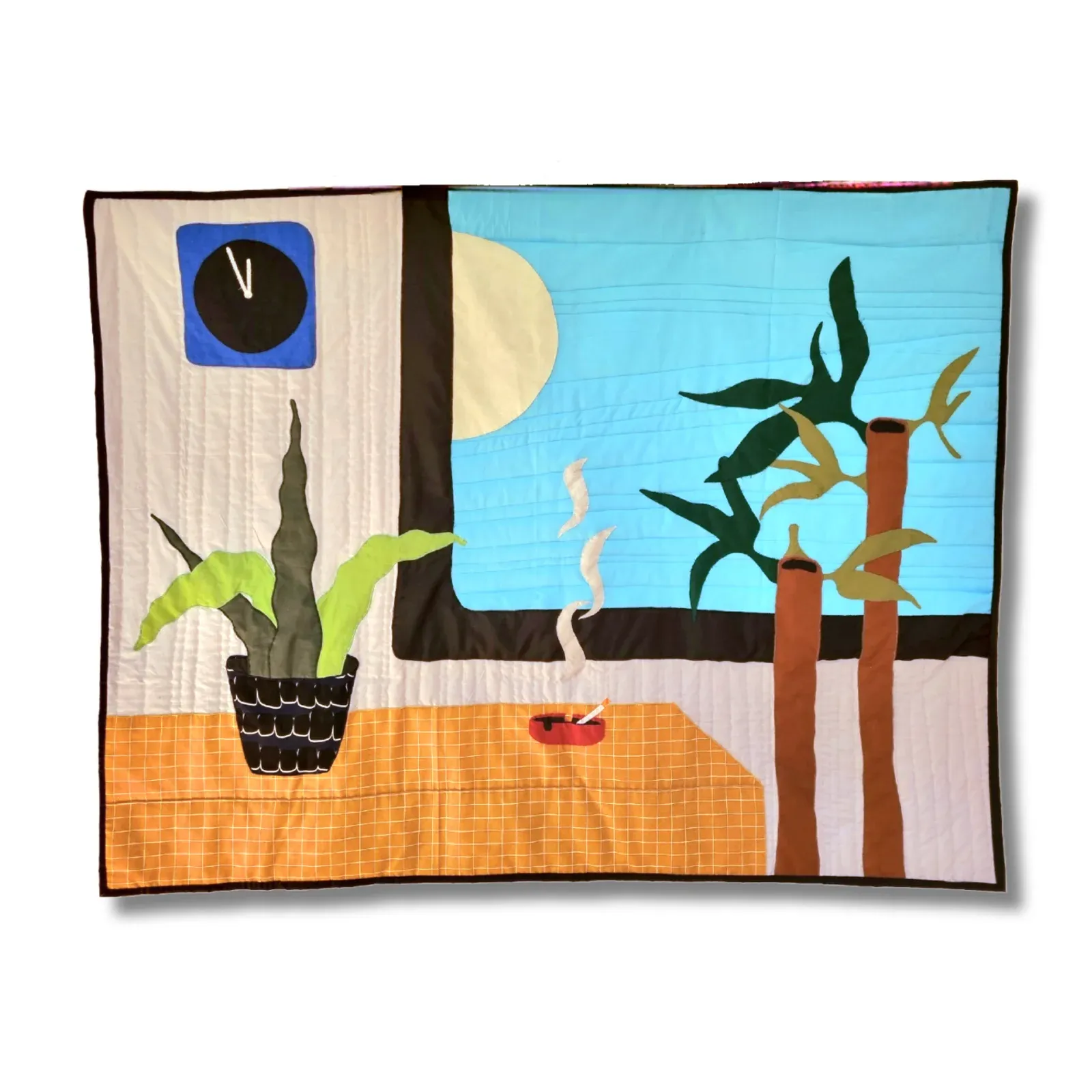
Rosinski’s world is post-body but not post-human. There’s warmth here, but no safety. Lace might soothe, but it also restricts.
A curtain invites, but obscures. Her rooms ache with something unspoken—where someone cried, paced, waited. It’s all there. Just not where we expect it.

This is not “textile art.” It’s spatial psychodrama. You feel the body in its absence.
You sense the feminist lineage—Louise Bourgeois’ fabric works, yes—but also a whisper of Tracey Emin, Heidi Bucher, even Agnes Martin’s insistence on structure.

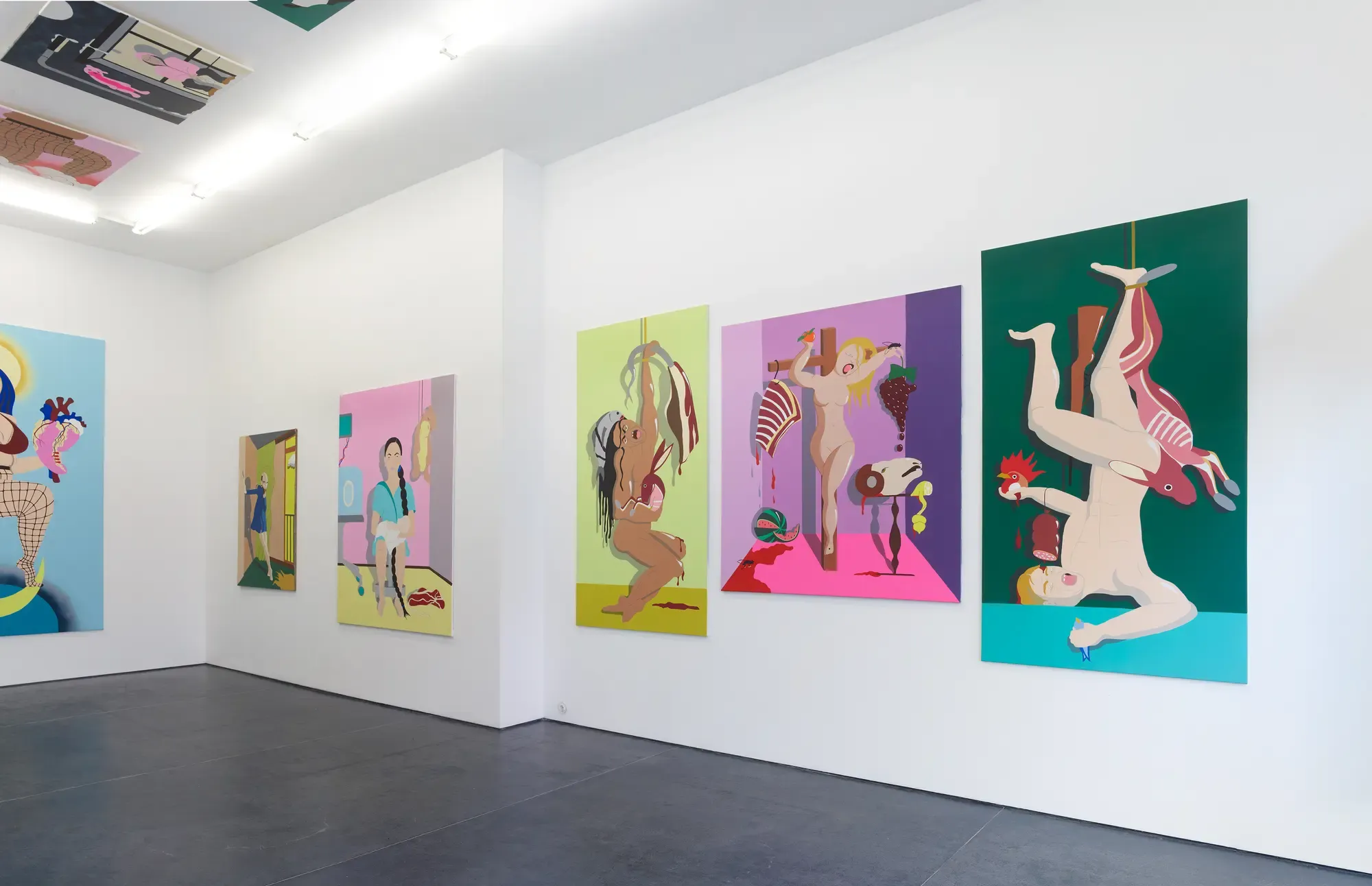
But Rosinski brings her own logic: she’s not nostalgic, she’s strategic. Her materials aren’t homage. They’re coded testimony.
A recurring motif: the interior. Not as retreat, but confrontation. Her rooms are containers for projection—of memory, trauma, comfort, and loss. Each fold holds a sentence.
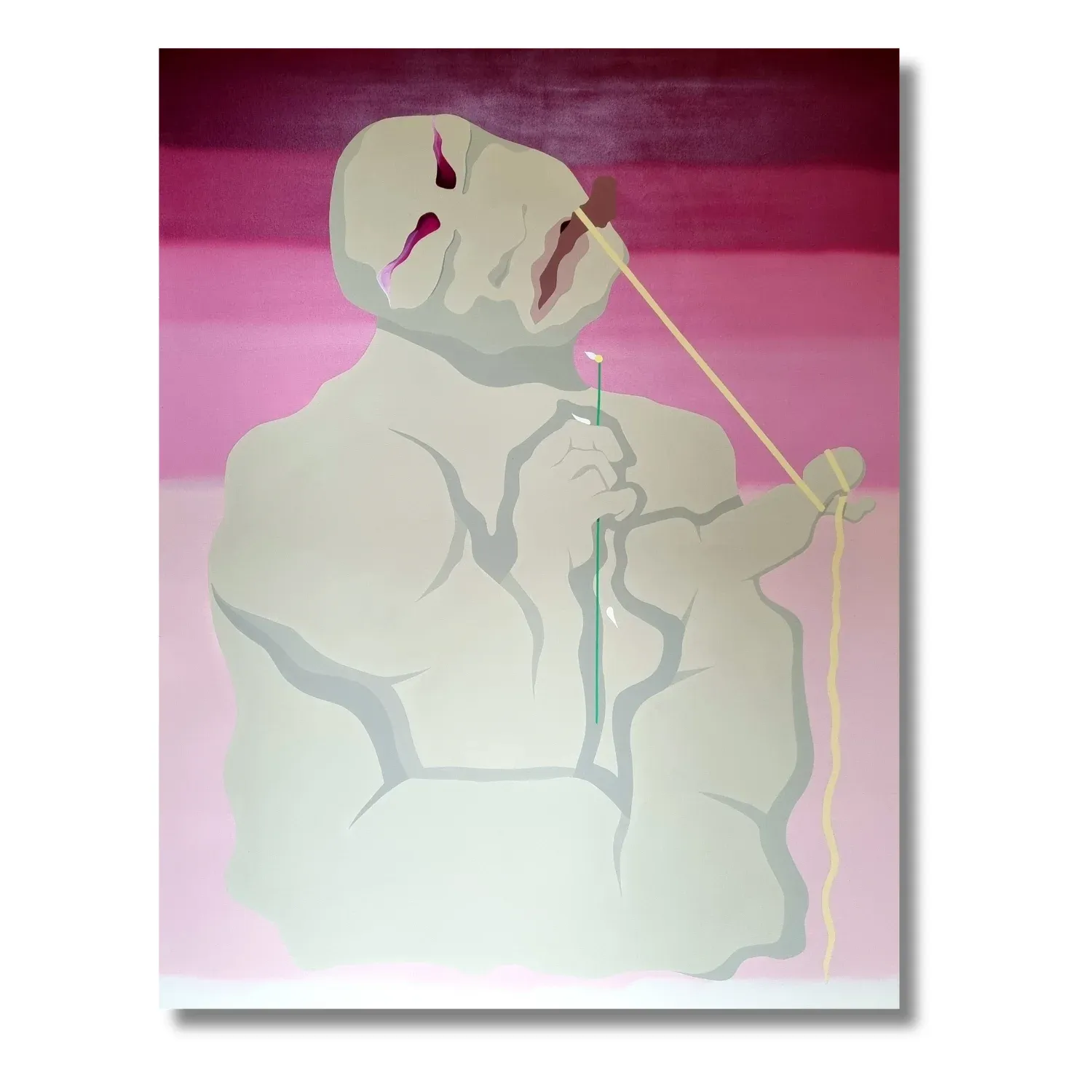
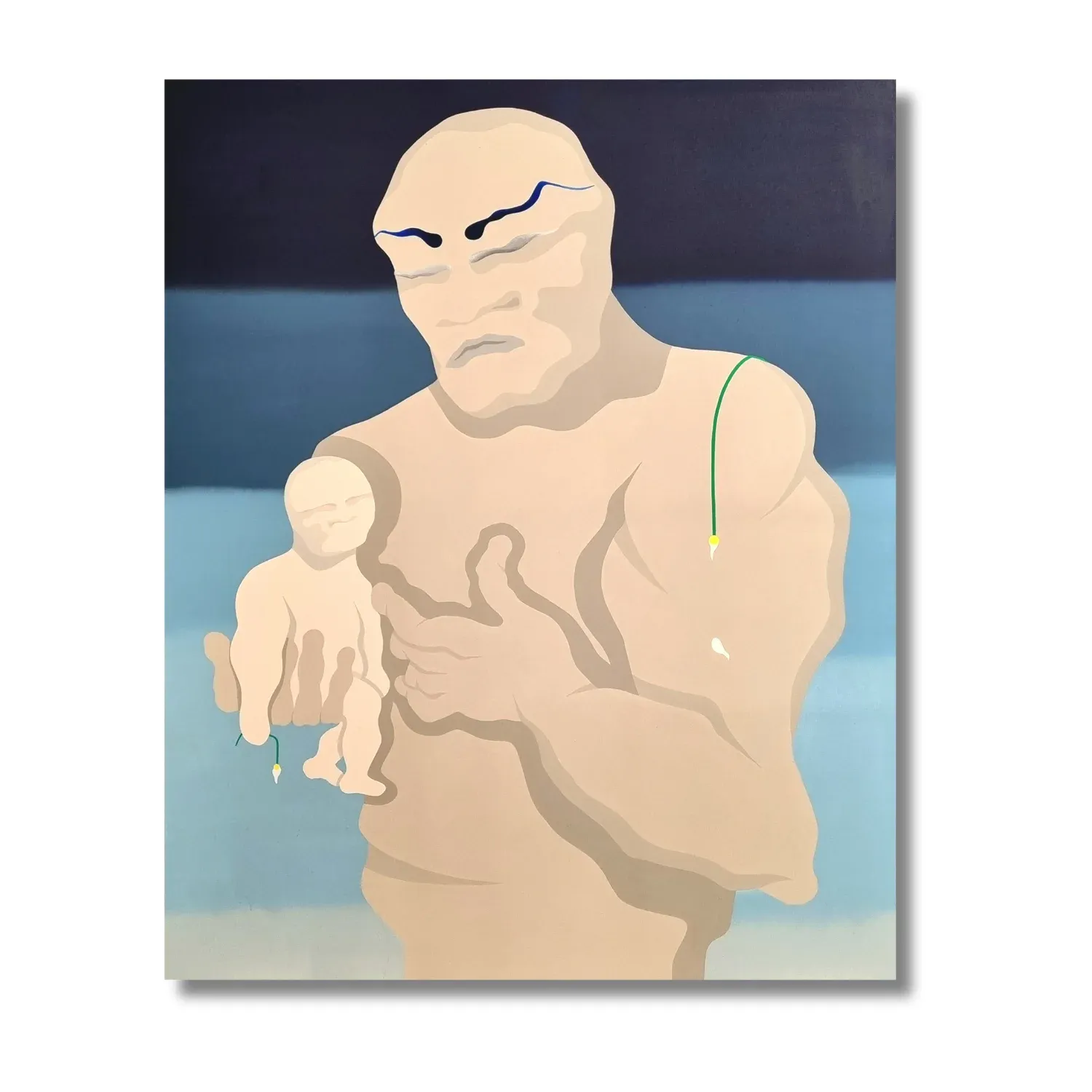
Gerade nicht (2024), acrylic on canvas, 155 × 120 cm, and Mater I (Nikopoia) (2024), acrylic on canvas, 120 × 90 cm. In these recent paintings, Rosinski returns to the body—muted, folded, and devotional. Gerade nicht offers a moment of emotional withdrawal, the figure resisting the gaze. Mater I (Nikopoia) echoes iconography without submission: a mother not venerated, but veiled in ambiguity. Courtesy of and with permission by the artist Rosina Rosinski.
Each seam, a silence. The works demand slowness. Attention. Almost ritual viewing. They don’t cry. They hum.
Rosinski’s shift to textile isn’t aesthetic—it’s political. It challenges the visual hierarchy: paint over fabric, gesture over labor, body over space.
She upends it all. Her works don’t shout. They remember. And in their remembering, they ask us to do the same.
Key Themes
- Embodiment through absence
- Feminist architectures of memory
- Textiles as emotional cartography
- The body as ghost, room as echo
- Softness as confrontation

Notable Series / Visual Motifs
- Velvet interiors with spectral presence (Rippe bei Nacht II)
- Domestic compositions hinting at loss (Gutbürgerlich)
- Faux leather and lace works as memory containers (First time we talked)
- Acrylic remnants from the earlier muscular series
- Bedsheets and curtains as emotional staging devices
Positioning in Contemporary Art
Rosinski joins a wave of artists transforming domestic language into political form.

Galerie Norbert Arns
Her shift from figure to fabric places her in quiet dialogue with Bourgeois, Emin, and Bucher, but her painter’s eye and architectural precision set her apart.
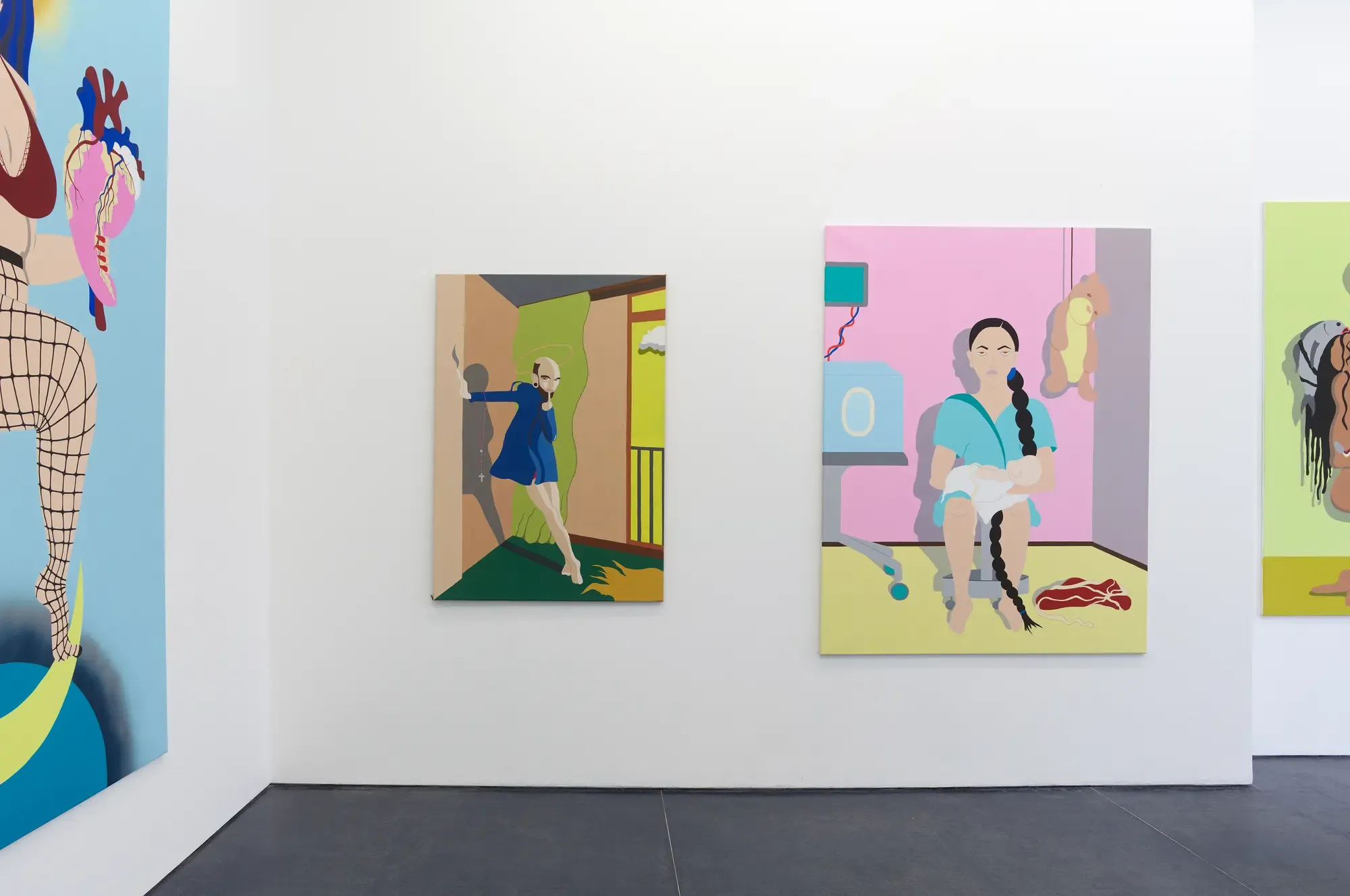
She’s not here to revisit softness—she’s here to weaponize it. To make absence the most present thing in the room.
You have to follow her work on Instagram.

Munchies Art Club first Article - Rosina Rosinski in 2023: On Self-Portraits, Memory and Dream"
Munchies Art Club highlights the female artist in contemporary painting: Rosina Rosinski.
She is currently a finalist in the prestigious Hopper Prize with her paintings.
It's about dreams, wishing not to dream as much for at least one night. It’s about losing. About interiors, being stuck in a room. It’s about which place to call home.
We have invited the artist to dive deeper into her work.
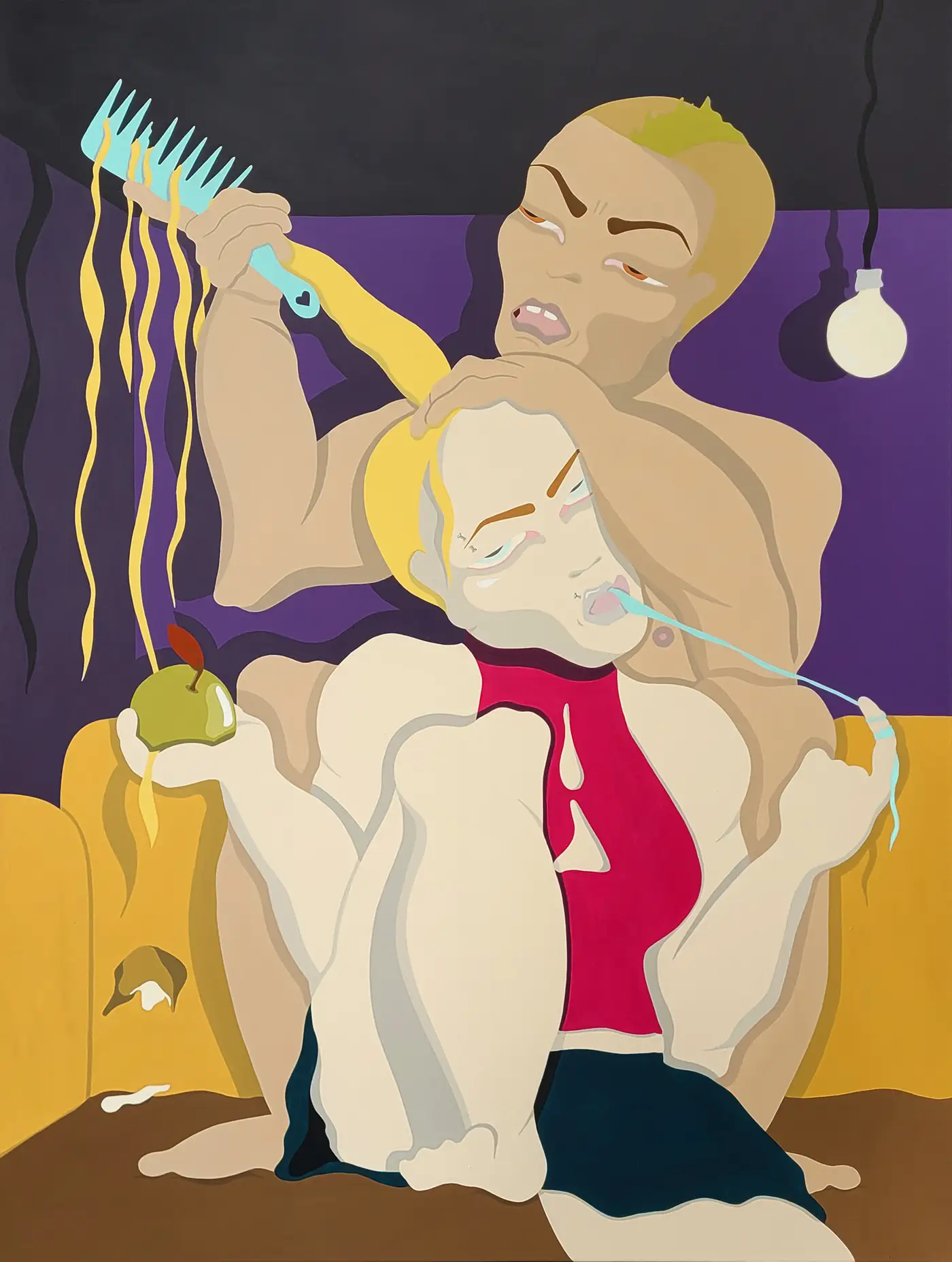
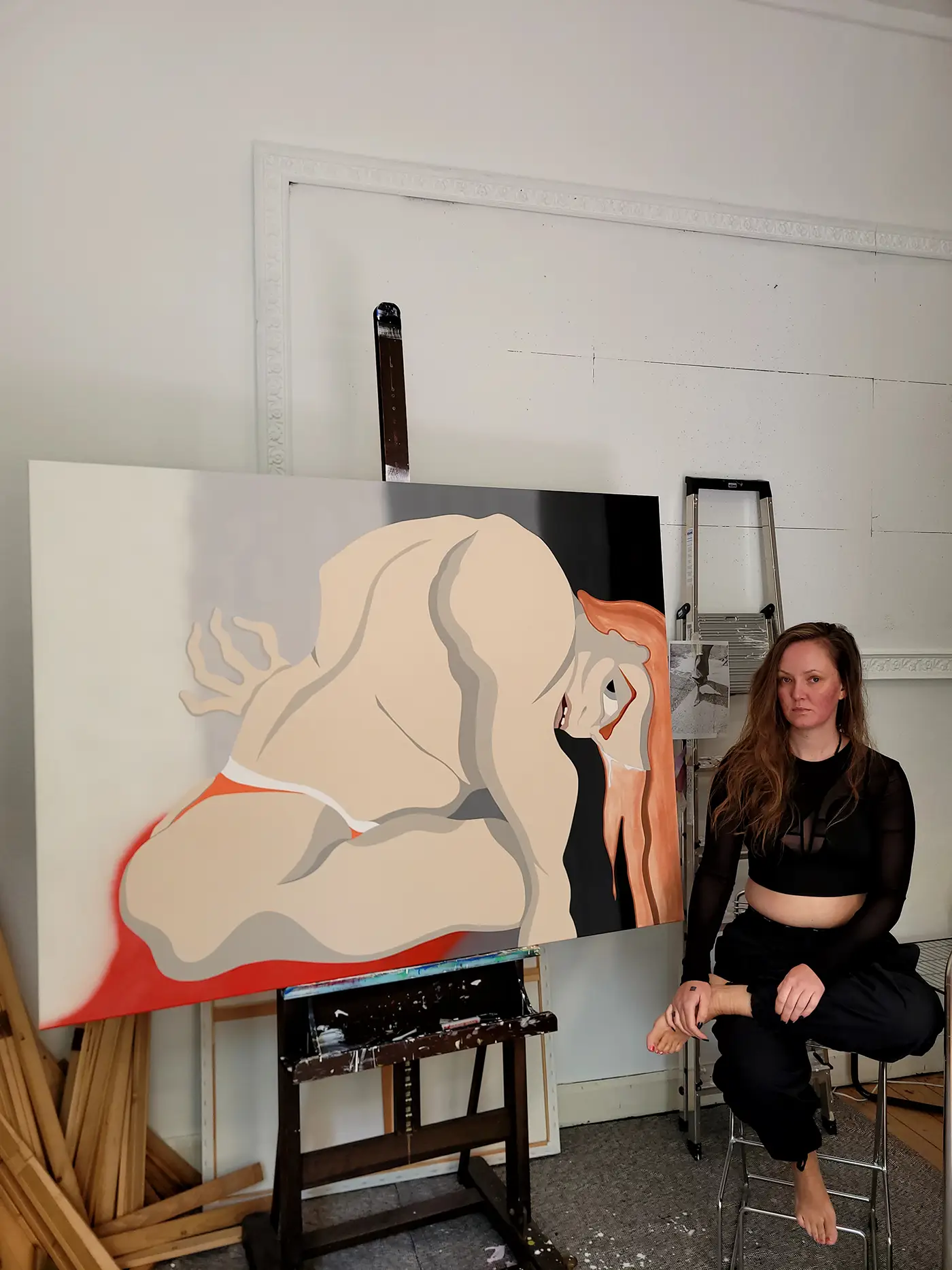
Rosina Rosinski: left -> VII. Acedia right -> From the Studio, working on Mater Dolorosa | Image Courtesy by the Artist
Rosina Rosinski stands out not only for her compelling large-scale self-portraits but also for her introspective exploration of identity, memory, and the human condition.
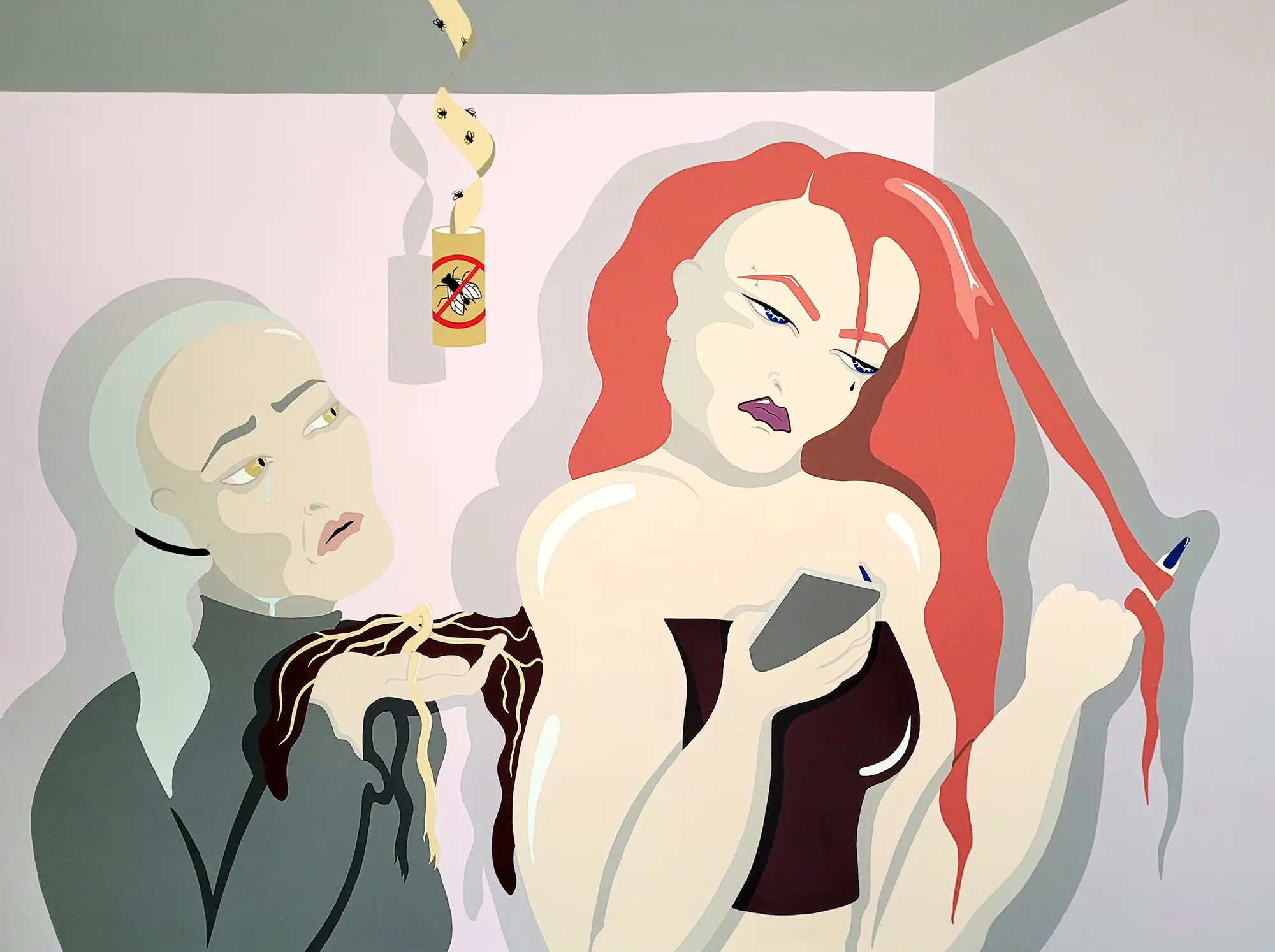
Based in Dortmund, Germany, Rosinski is a self-taught artist who has rapidly gained attention since she began her painting career in 2019.
Artistic Journey
Rosina Rosinski's journey into the art world is as unconventional as her works.
Originally enrolling in college to study art history, Rosinski chose a different path, dropping out to dedicate herself entirely to painting.
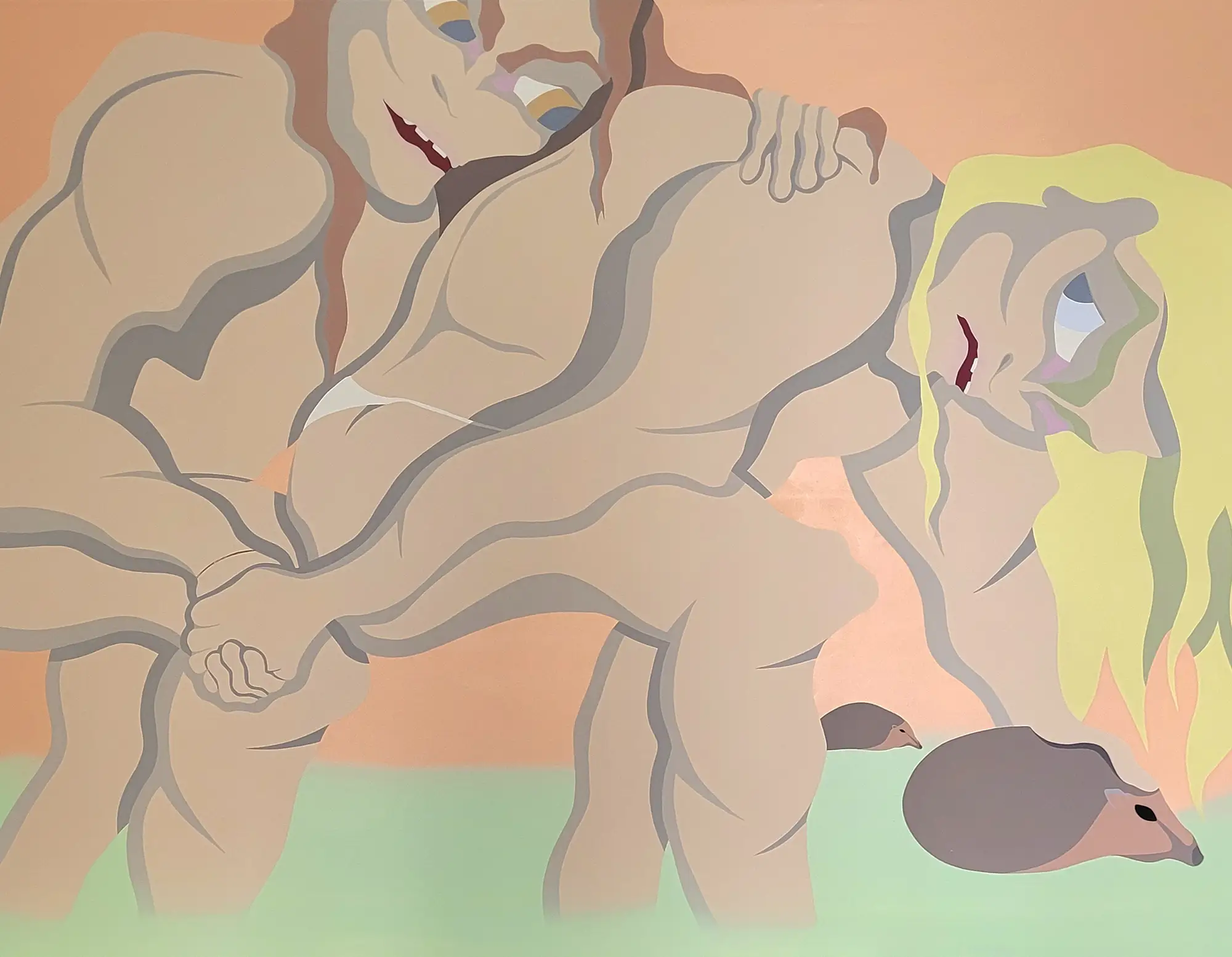
This autodidactic approach has allowed her a unique freedom to explore and express without the boundaries traditionally imposed by formal education.
The Essence of Her Work
Rosinski’s paintings are intensely personal, processing her life experiences through a blend of mythological and Christian iconography.
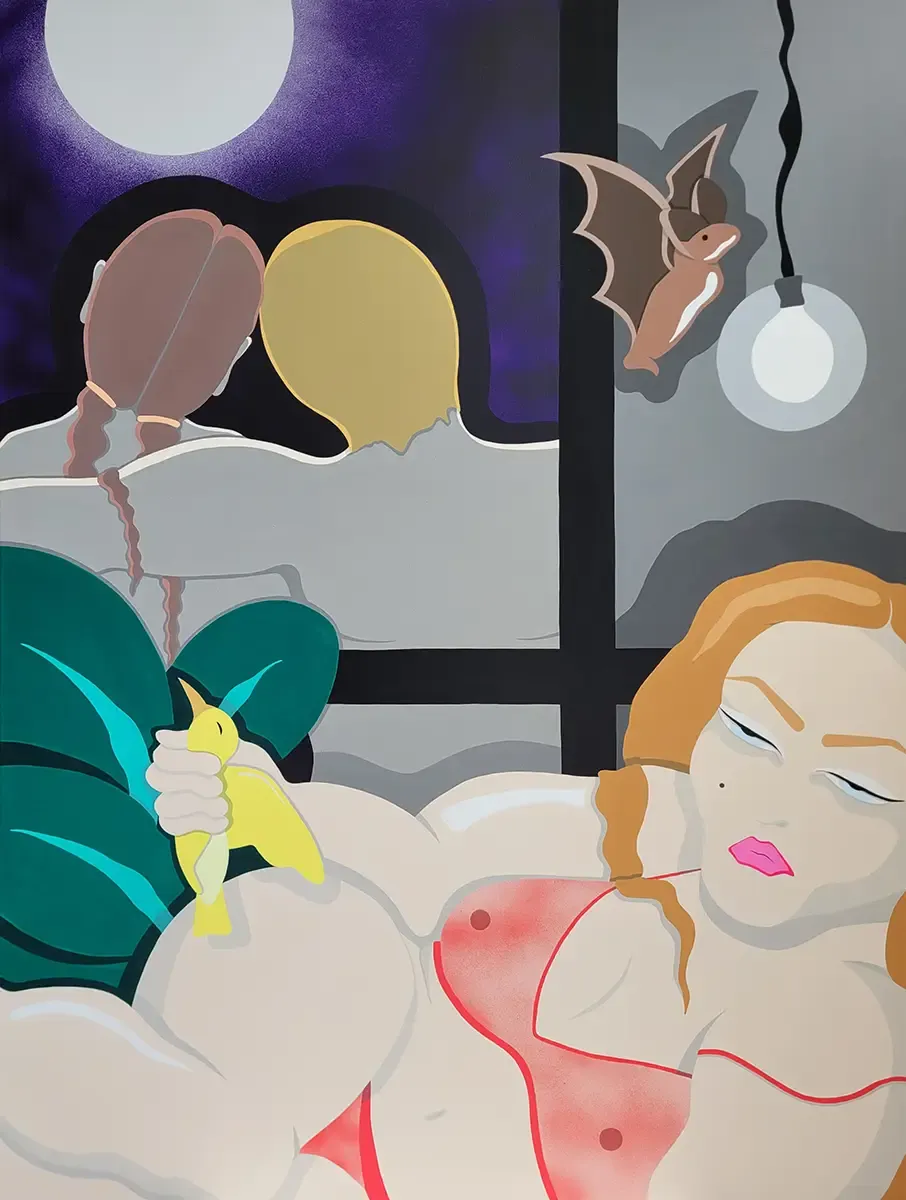
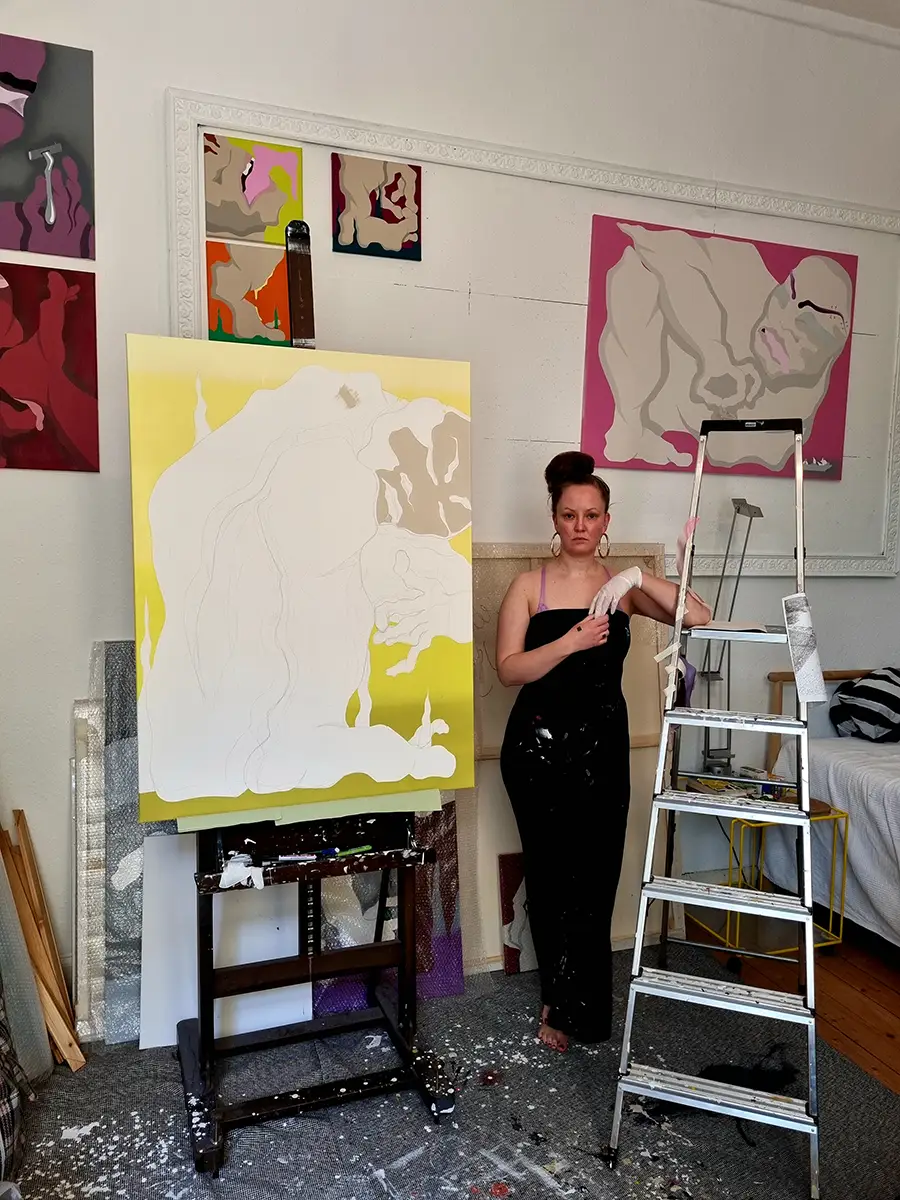
Rosina Rosinski: left -> VI. Invidia (May '22) -> The Artist in her Studio | Image Courtesy by the Artist
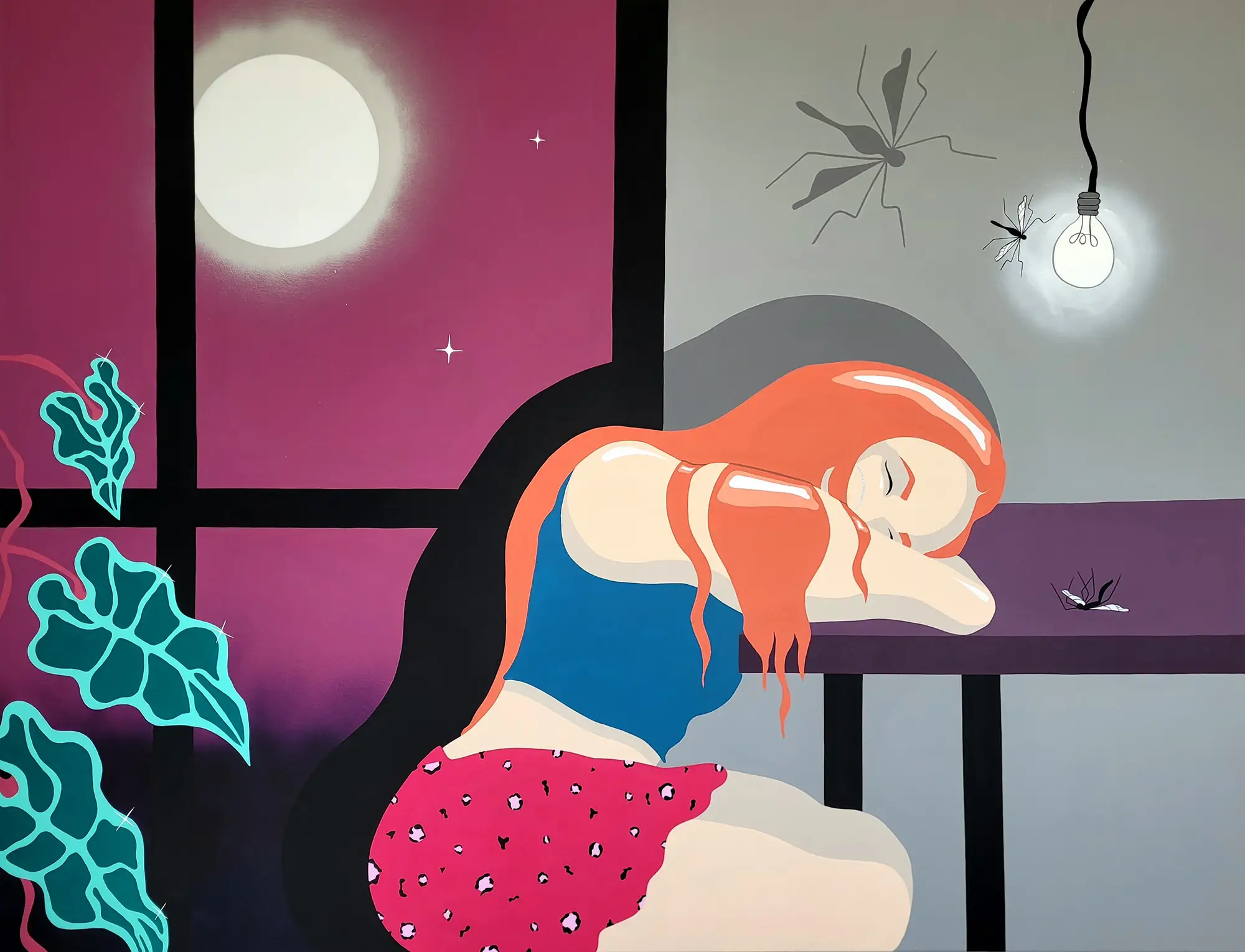

These artworks often depict only one or two figures, typically in confined spaces that seem to press them against walls and ceilings.
Hopper Prize -> Rosina Rosinski Interview
This spatial compression mirrors the psychological and physical restrictions imposed on the figures, emphasizing themes of confinement and struggle.
Influences and Themes
Her works frequently focus on the female form, challenging and subverting the historical male gaze by presenting women who are not only depicted as strong and muscular but also larger than life.
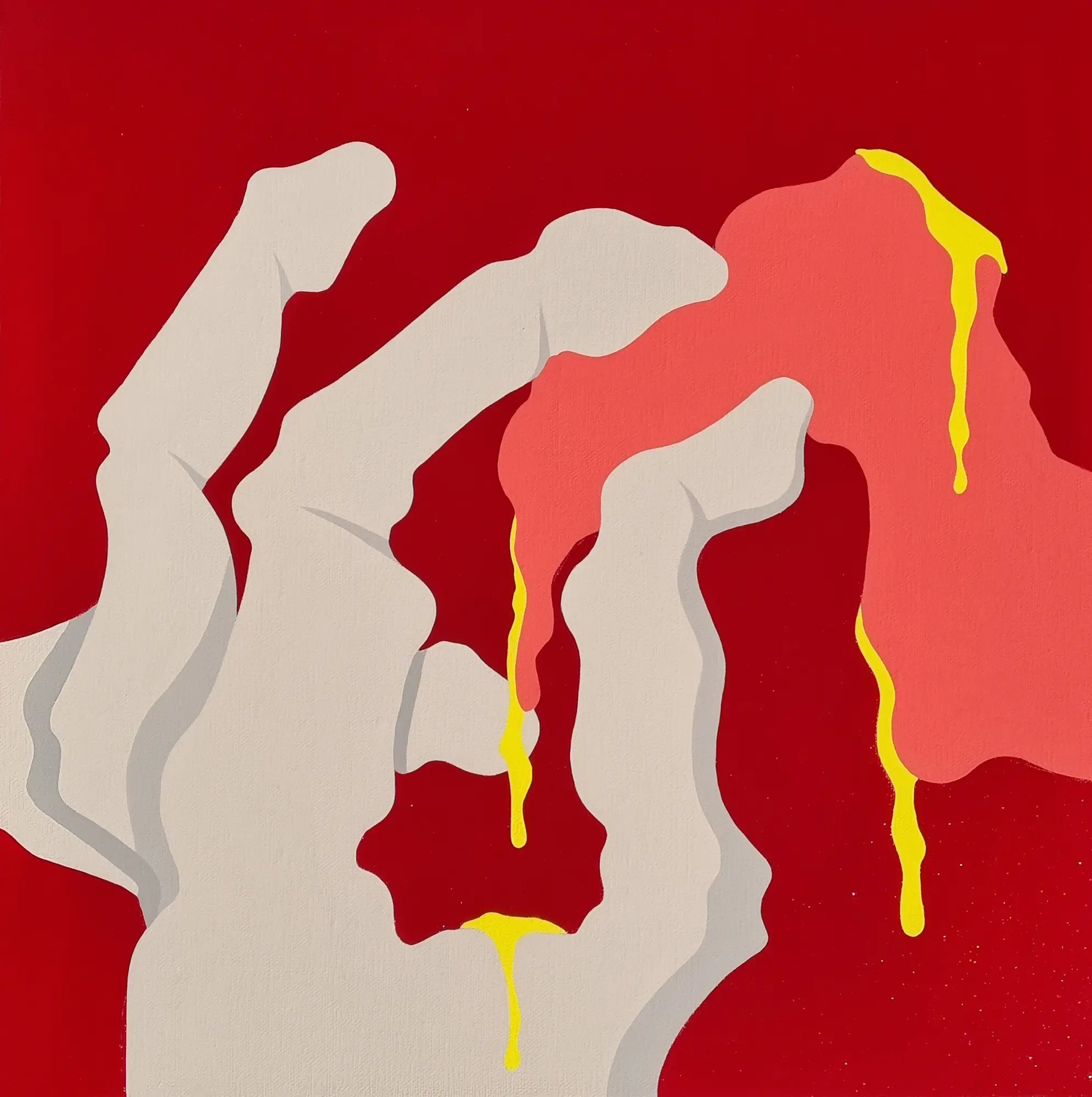
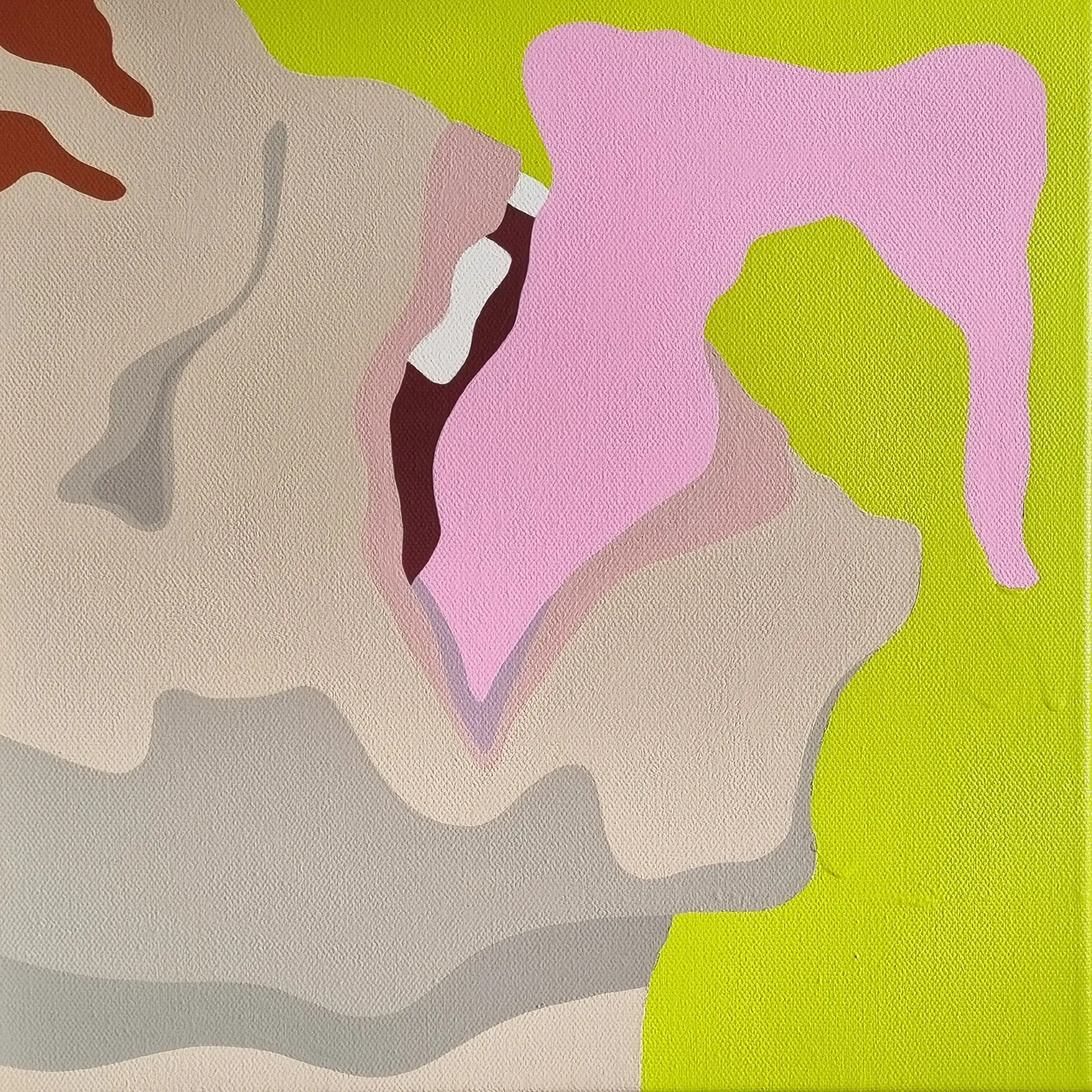
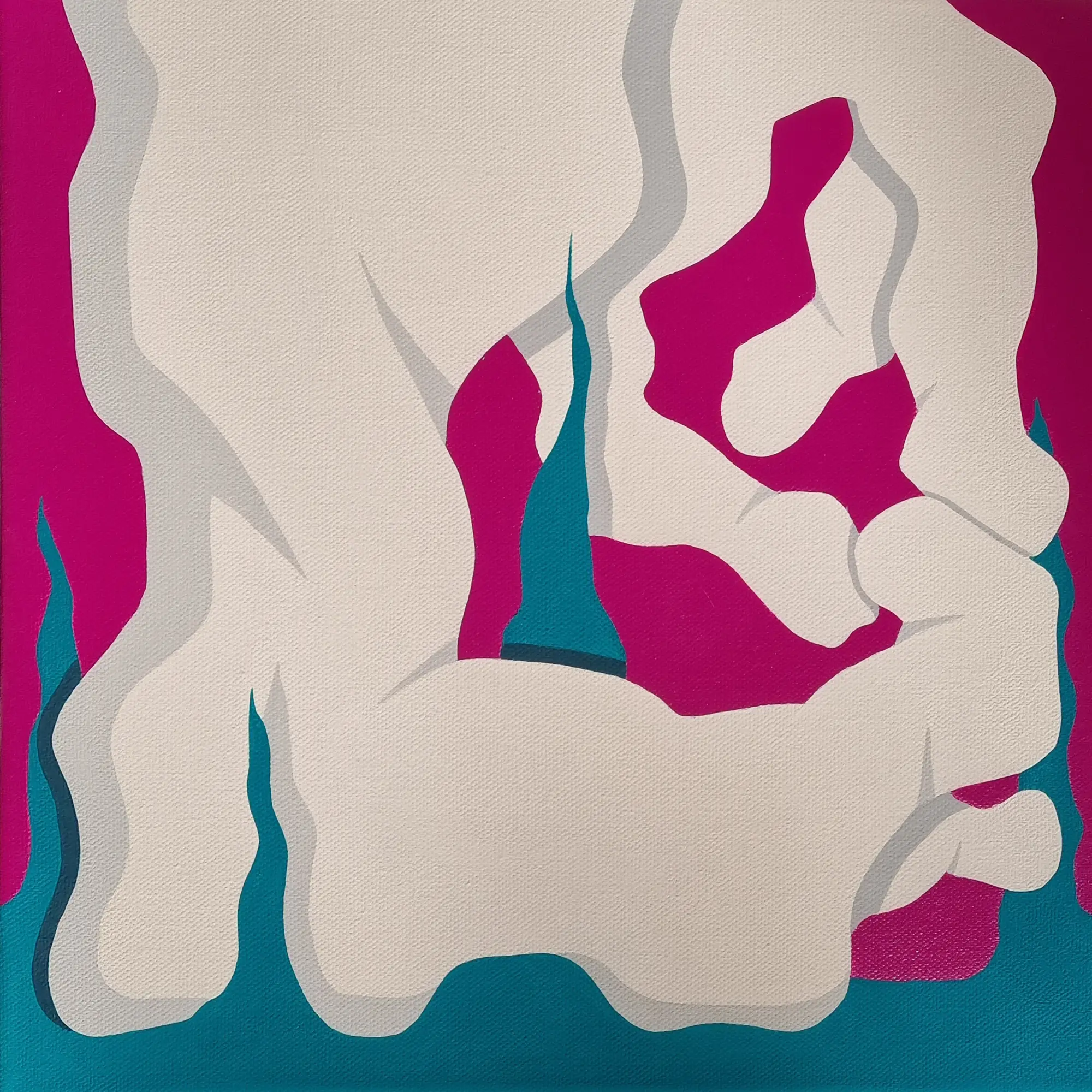
Rosina Rosinski: from left to right ( Artworks/Painting) -> Ich schmeck' dich nicht -> Ich seh' dich nicht -> Sucherin II | Image Courtesy by the Artist
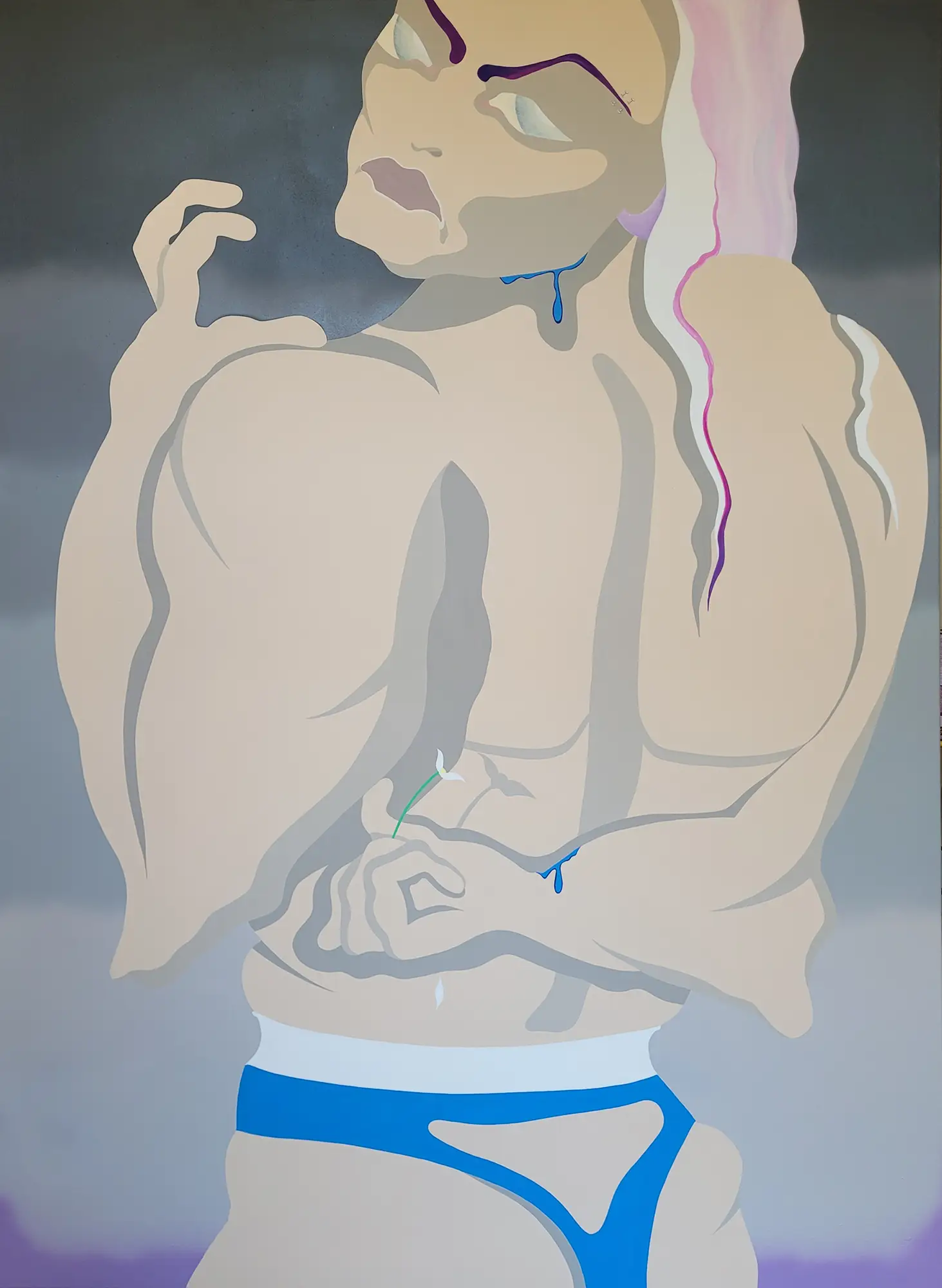
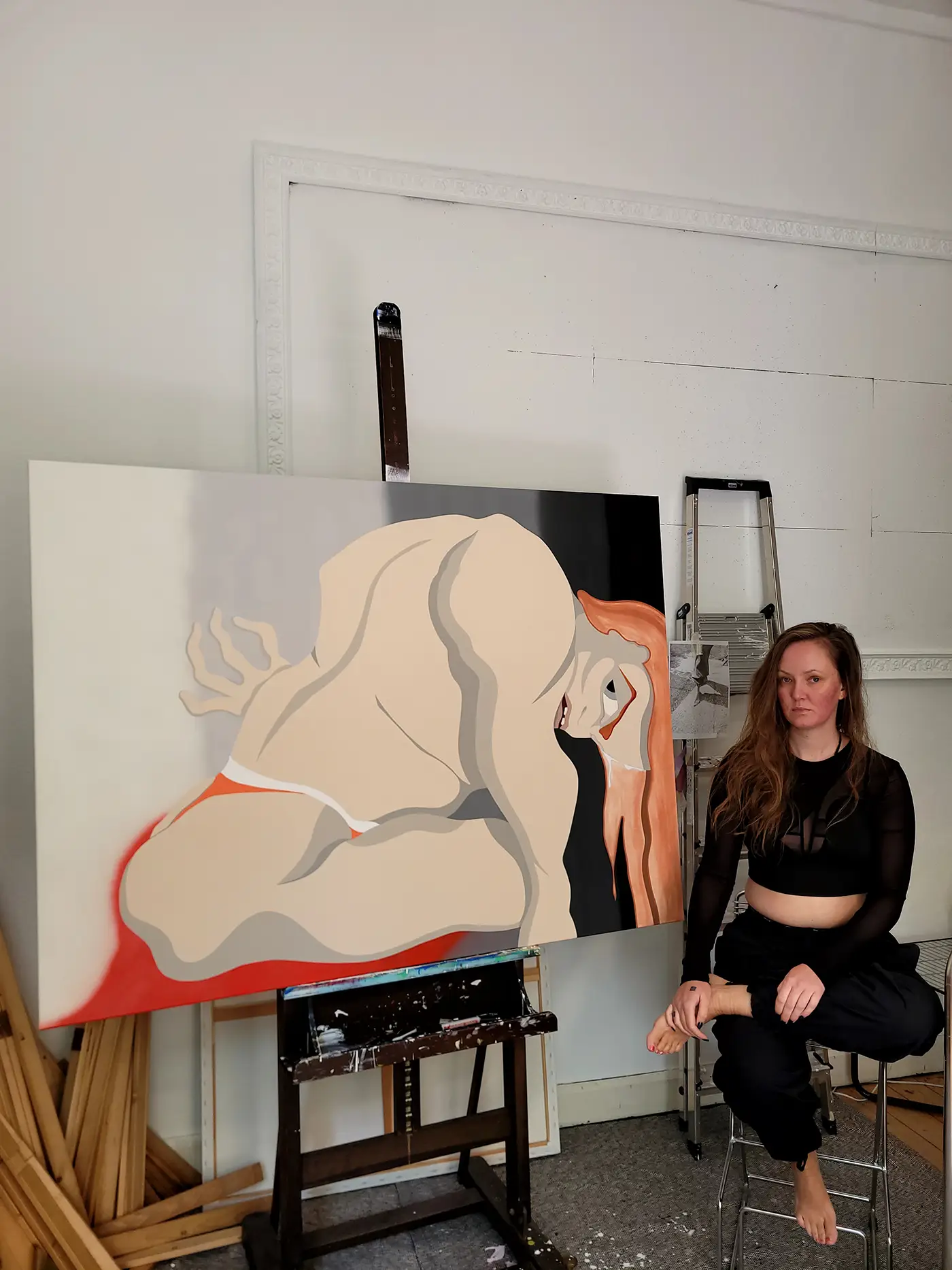
Rosina Rosinski: Berlin (Madonna mit Lilie und ohne Kind) | Image courtesy by the Artist
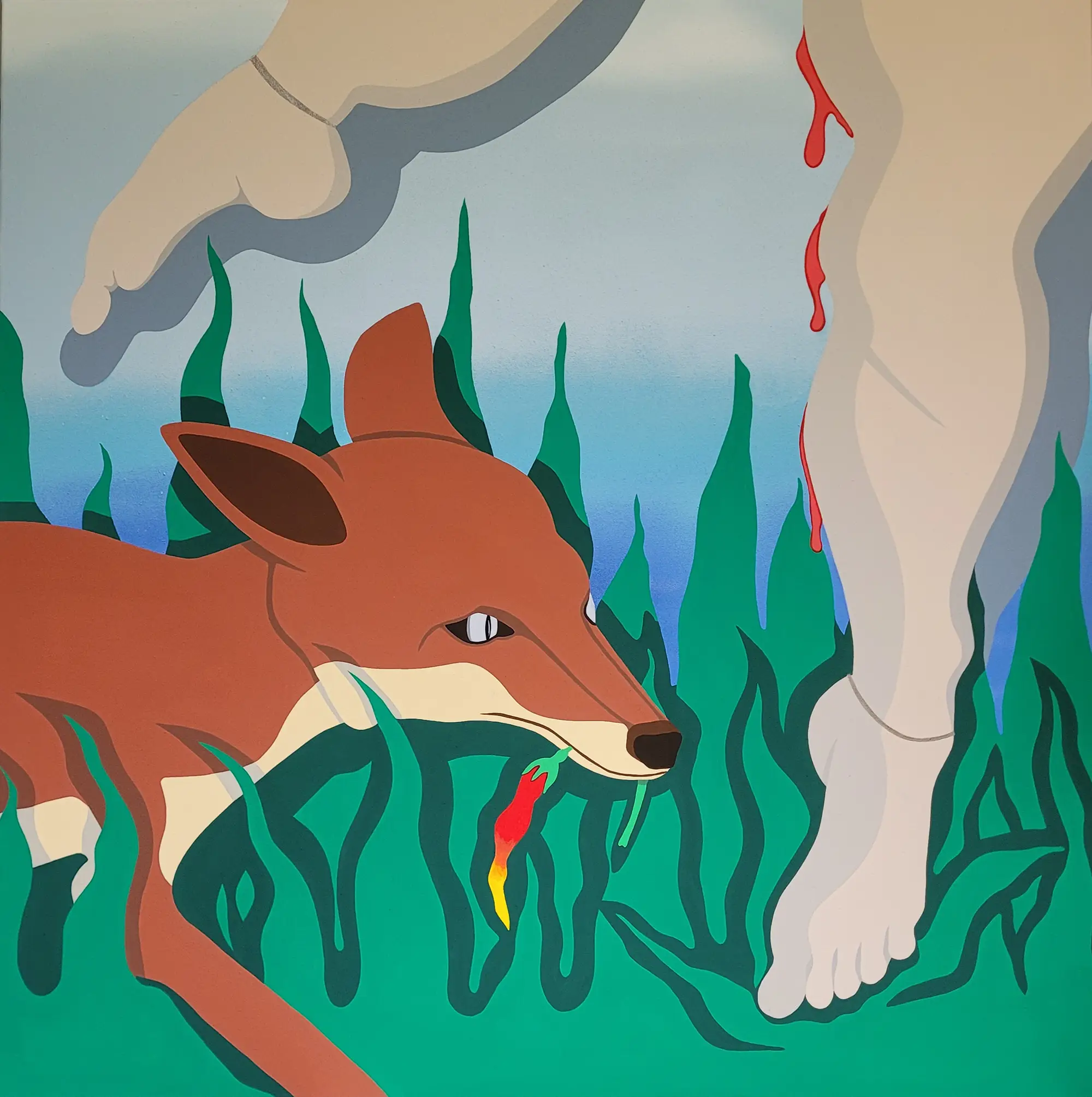
This bold portrayal addresses and reverses stereotypes, engaging deeply with issues of physical versus psychological strength.
Rosinski explains, "In my paintings, the female bodies...are present, more than I am most of the time, and they reveal the discrepancy between physical and psychological strength."
Technique and Style
Rosinski's meticulous technique features neat, print-like surfaces painted in bright colors, which initially attract the viewer like a candy store's vibrant allure.
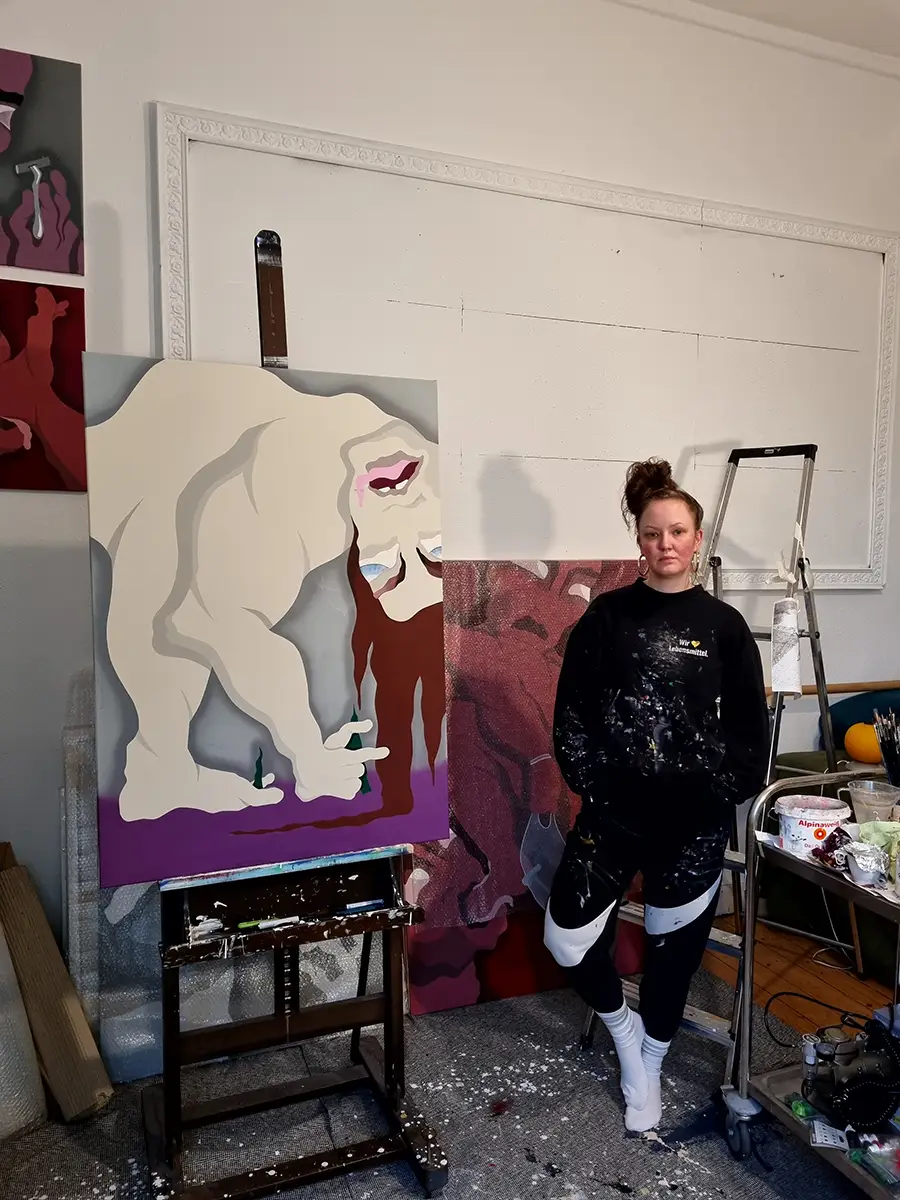
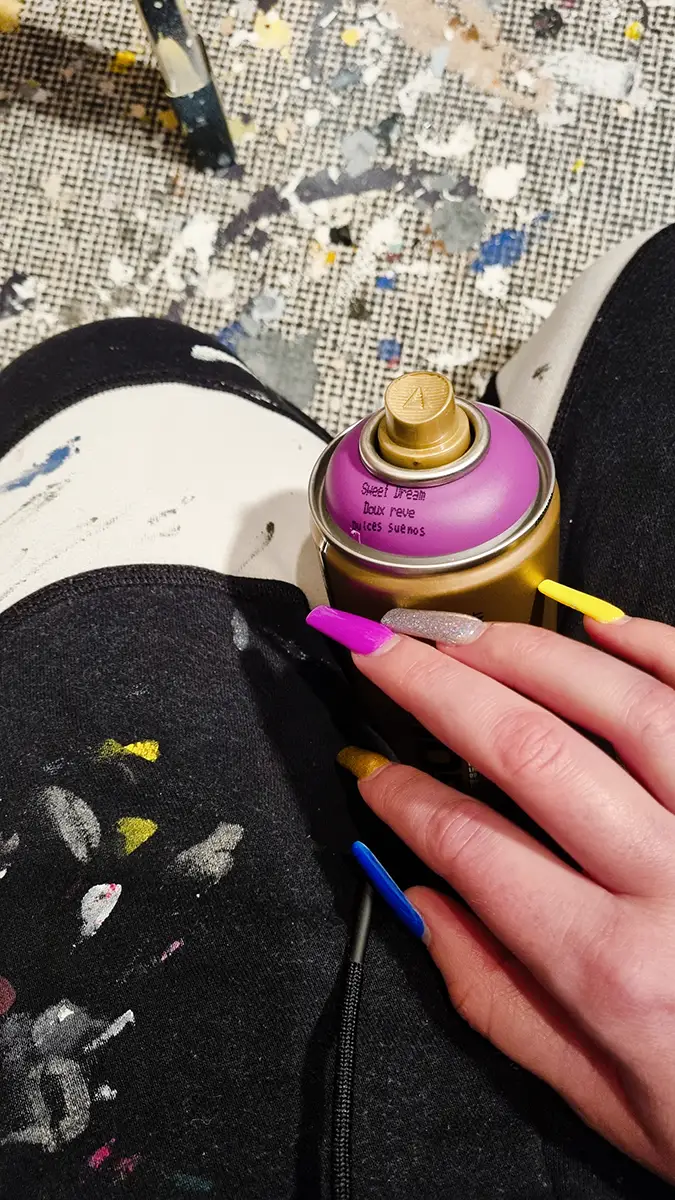
Rosina Rosinski: The promising Artist in her Studio | Image Courtesy by the Artist
However, upon closer inspection, the subject matter often reveals a darker, more uncomfortable reality, touching on life, death, and vanity, akin to the tradition of vanitas in art.
Impact and Reception
The art community, including curators, collectors, and fellow artists, has recognized Rosinski's work for its bold thematic explorations and technical prowess.
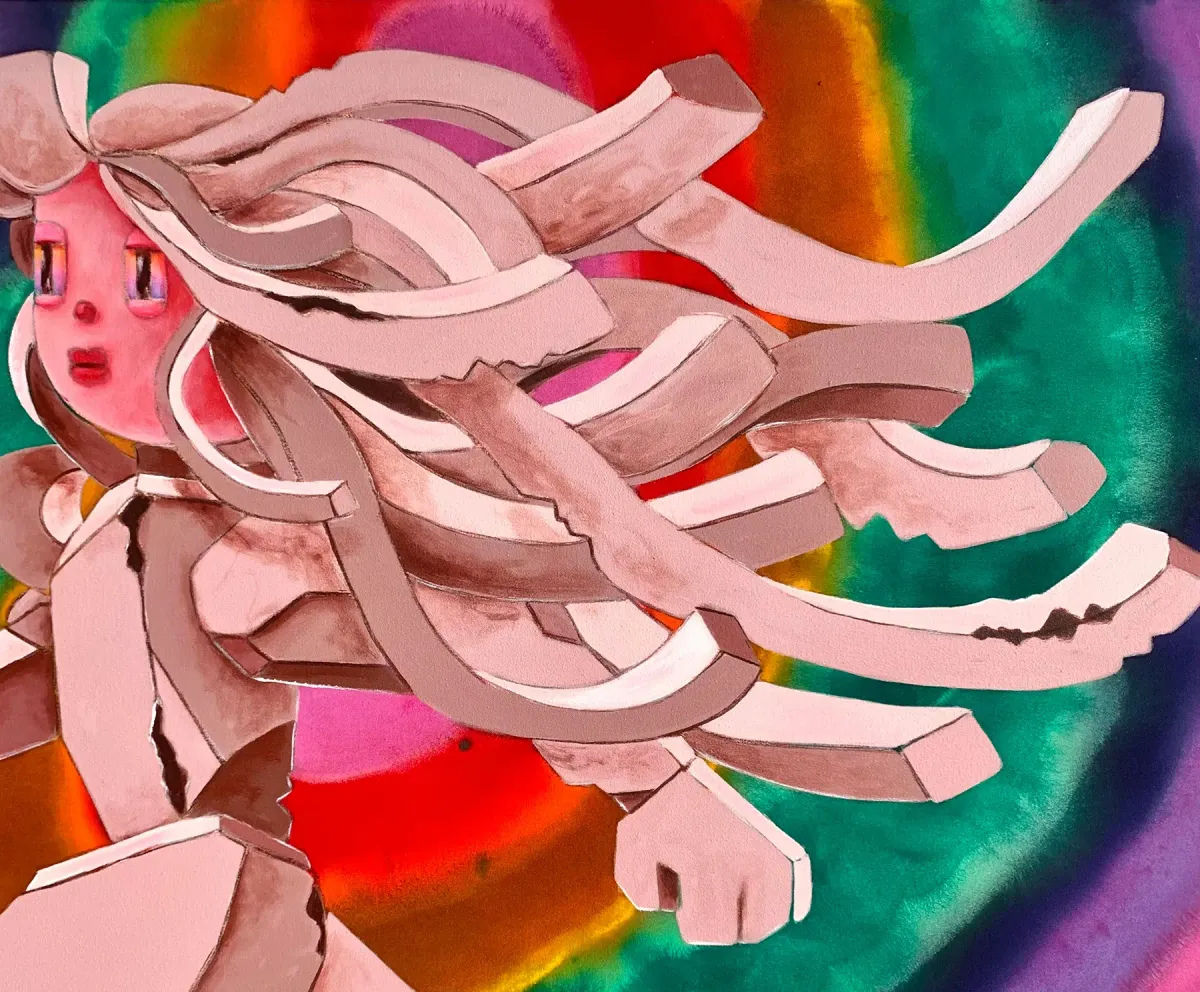
Painting now - Join the Club
Critics often note the dual nature of her paintings—inviting yet challenging, bright yet dark—and how this duality plays into broader discussions about female representation and identity in contemporary art.
Conclusion
Rosina Rosinski is more than an artist; she is a storyteller whose canvas speaks of personal histories and universal truths.
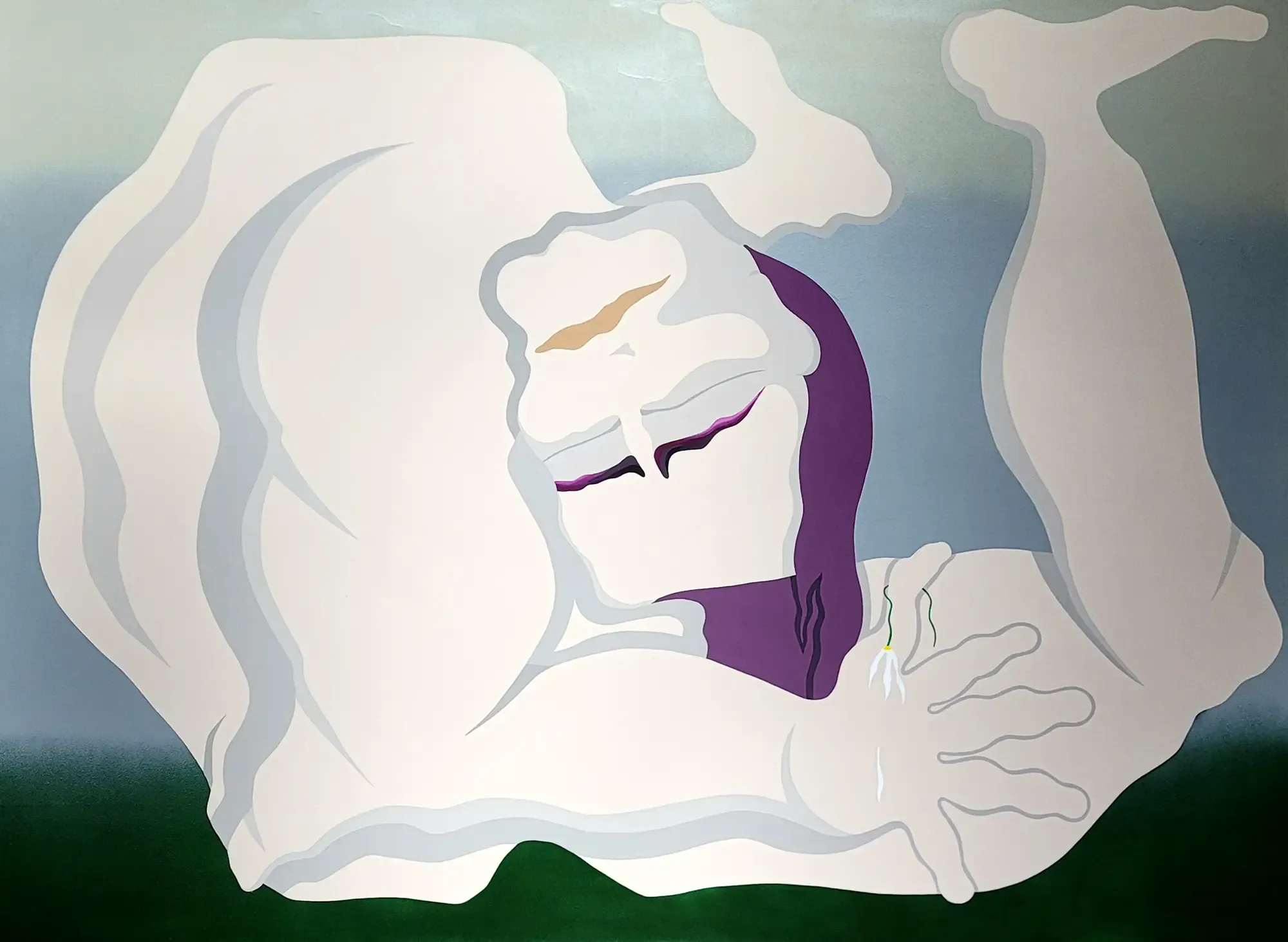
Her work invites viewers to reconsider their perceptions of strength, vulnerability, and beauty.
As she continues to evolve and push the boundaries of her craft, the art world eagerly watches, anticipating her next bold strokes.
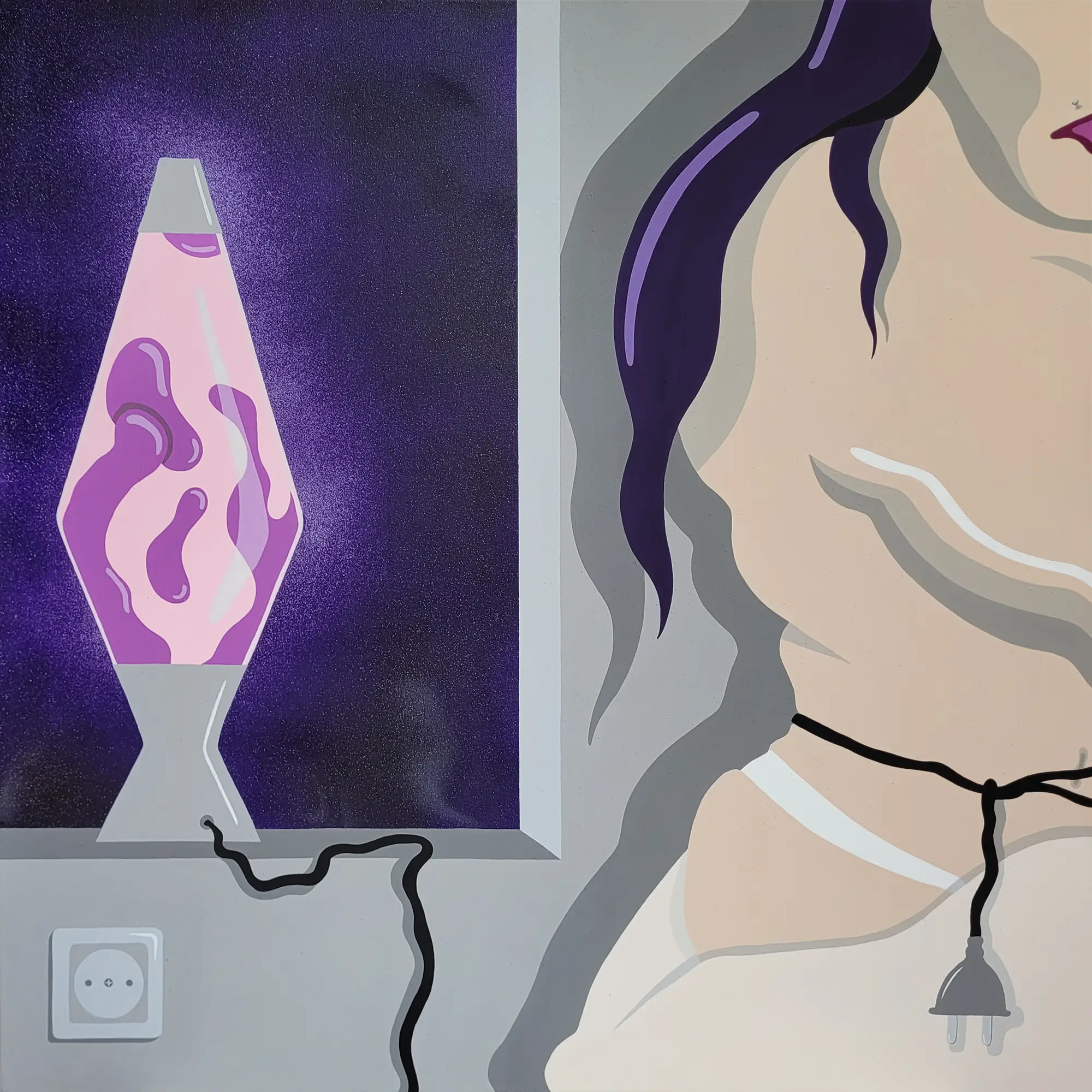
Rosina Rosinski reflects on her creative process with insightful clarity, noting that by reconstructing situations and reliving memories, she not only creates art but also initiates a dialogue with herself and with the viewer, bridging the past and the present, and potentially shaping the future of how we see and understand the human form.
For art lovers, collectors, and curators alike, Rosina Rosinski represents a compelling voice in contemporary art, promising a continuing evolution of thought-provoking and visually arresting works that challenge and enchant in equal measure.

Rosina Rosinski: Official Website

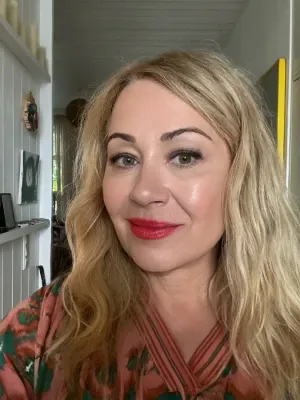
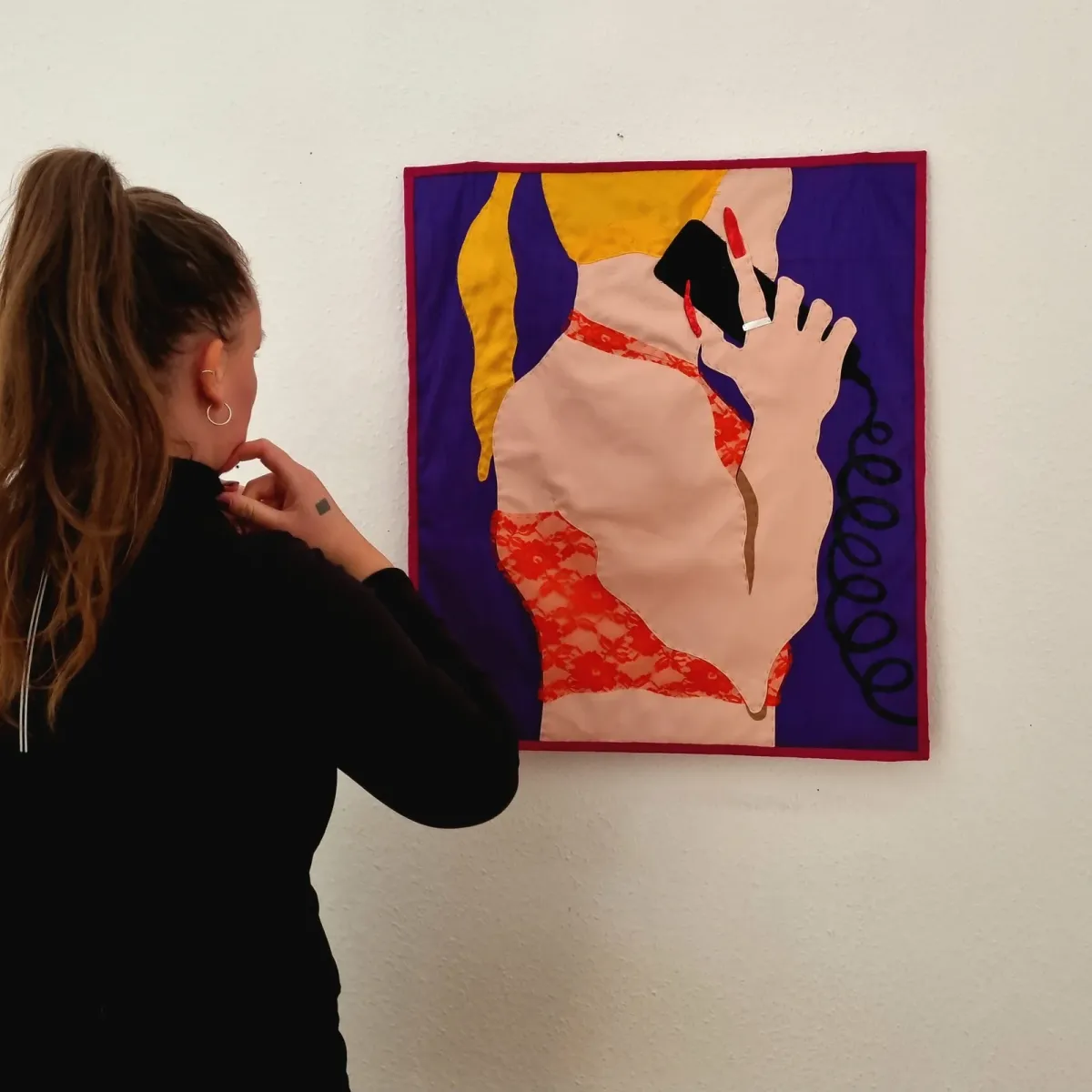




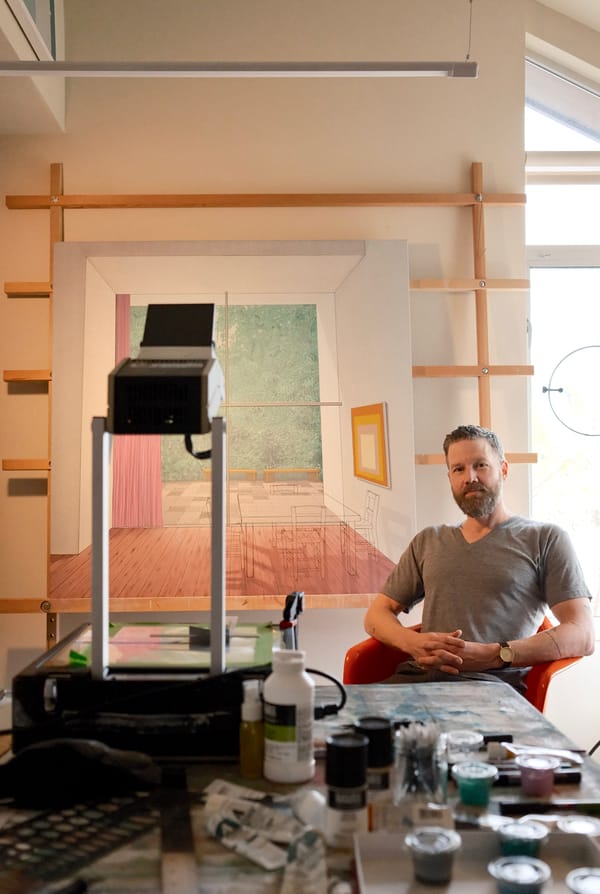

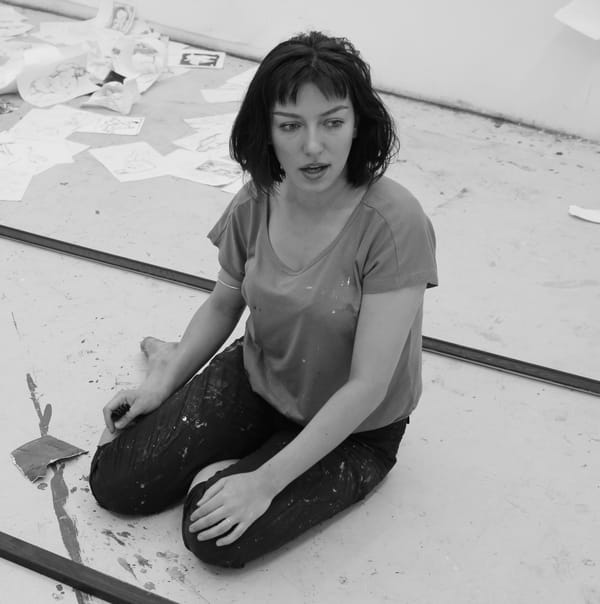
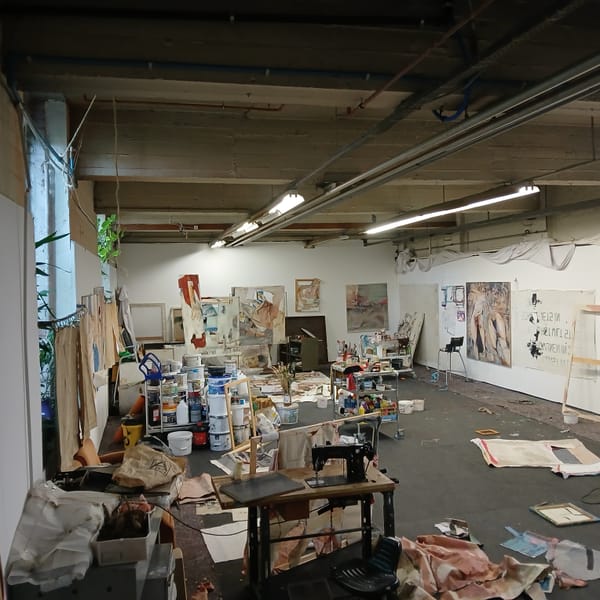

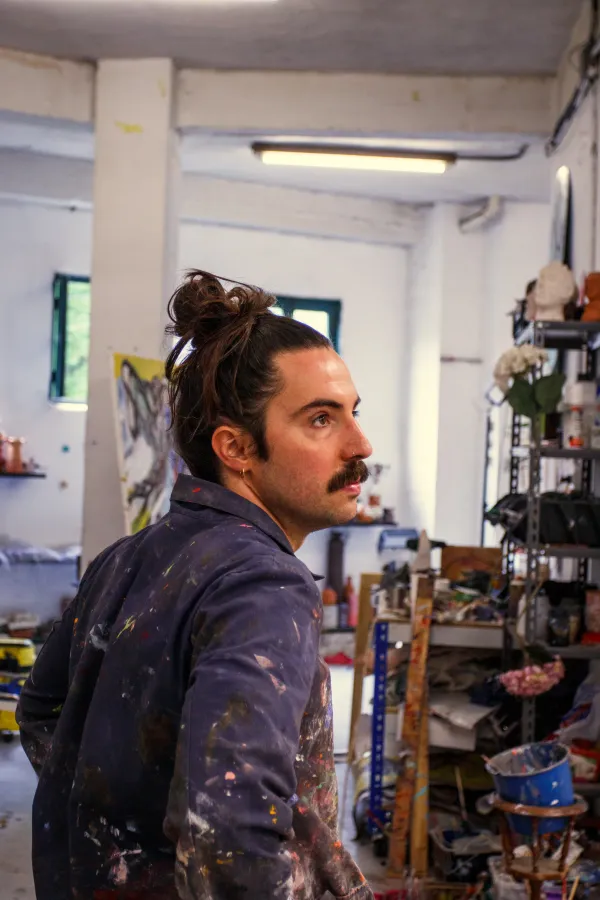
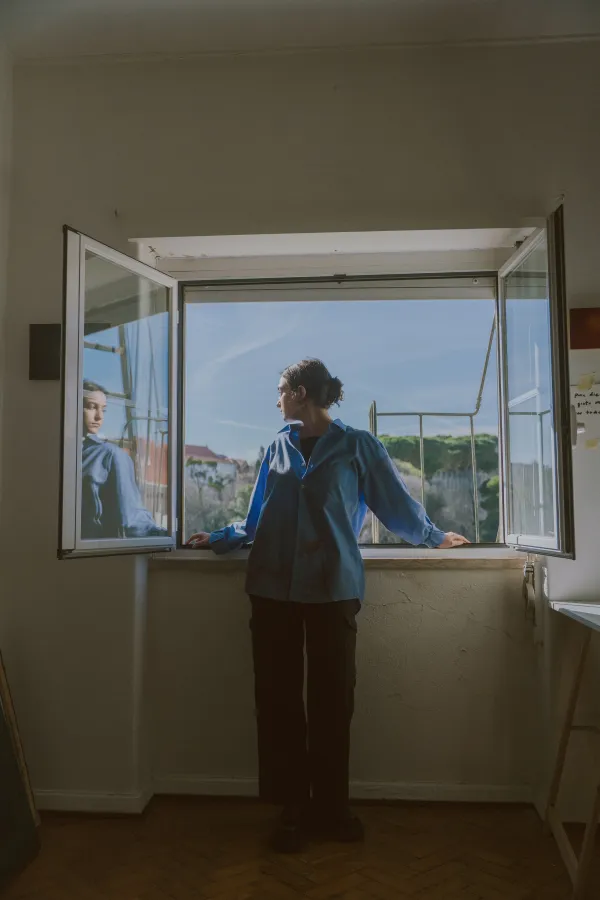
Member discussion